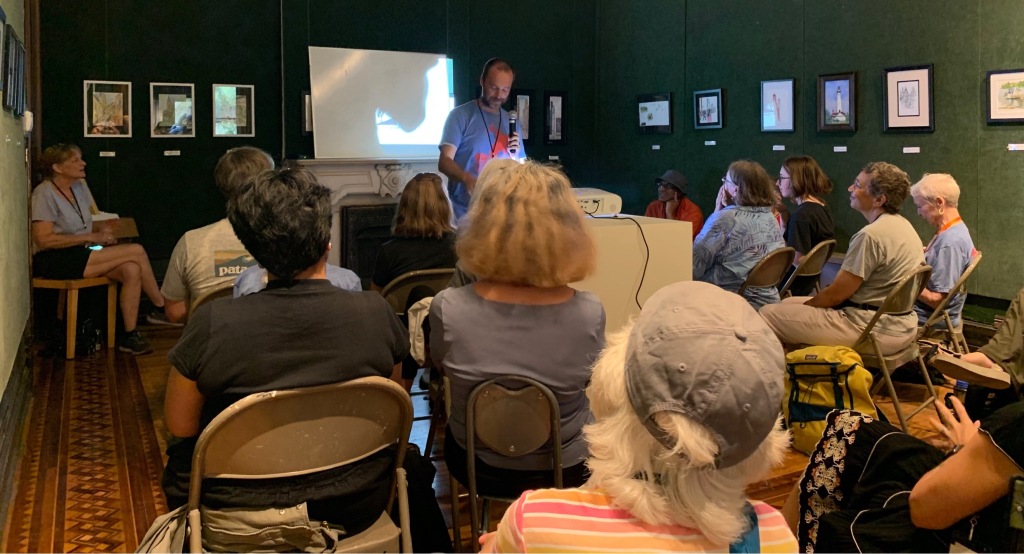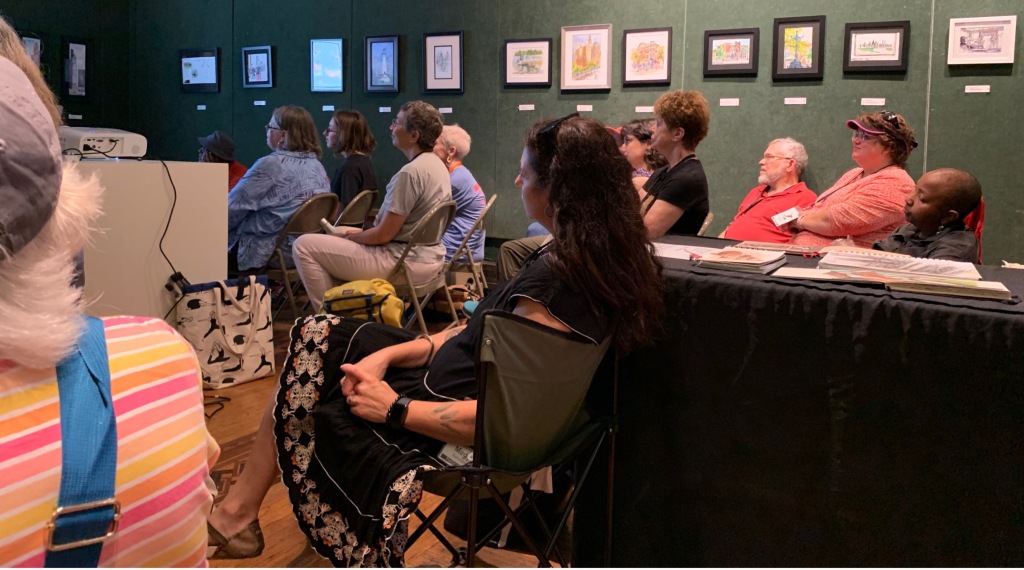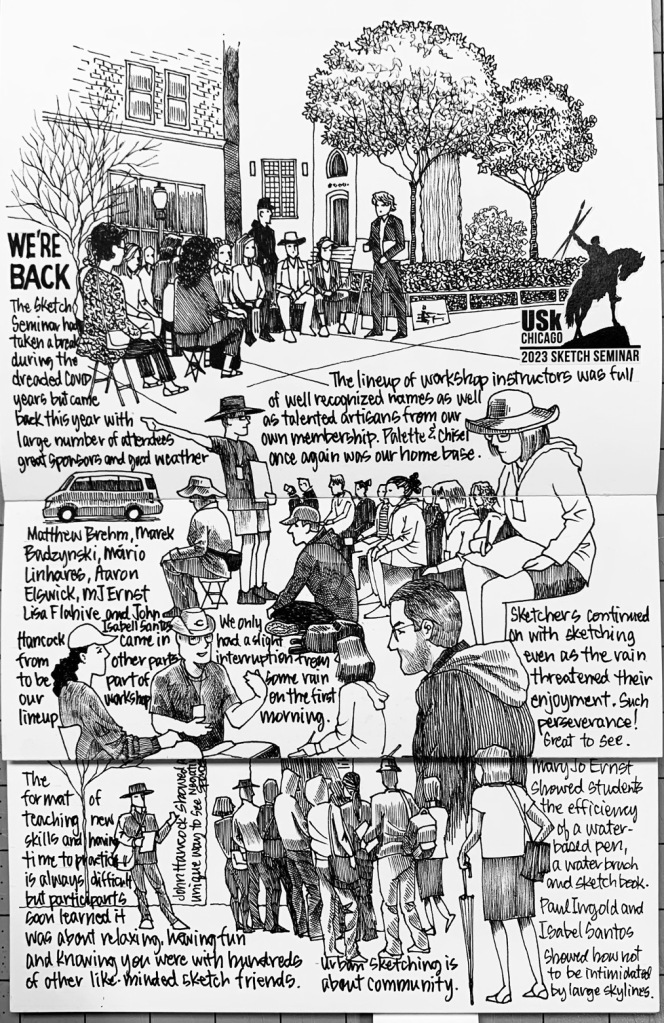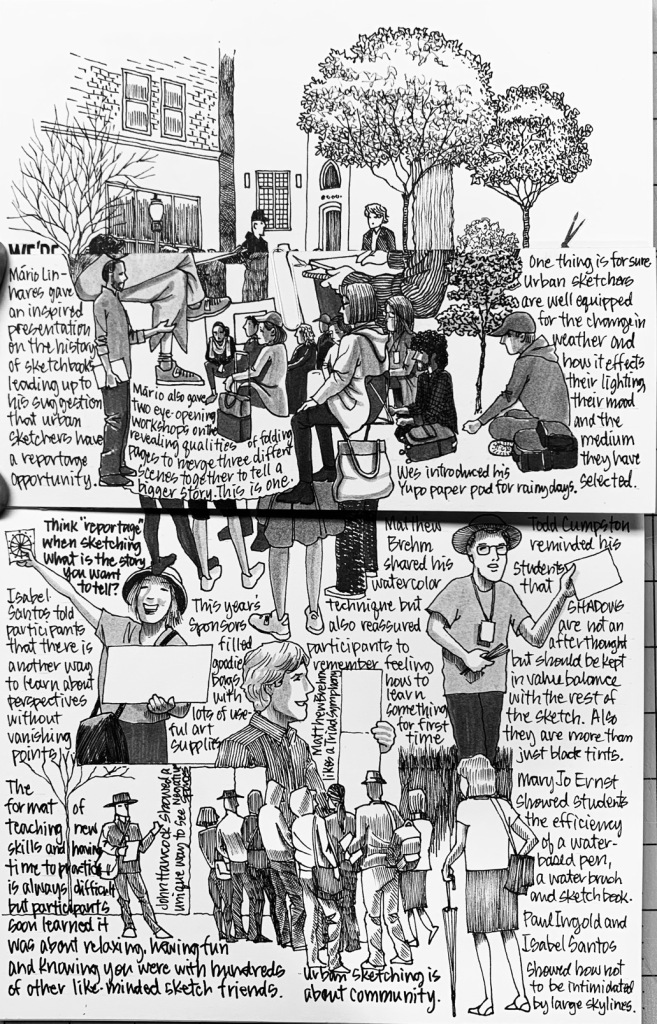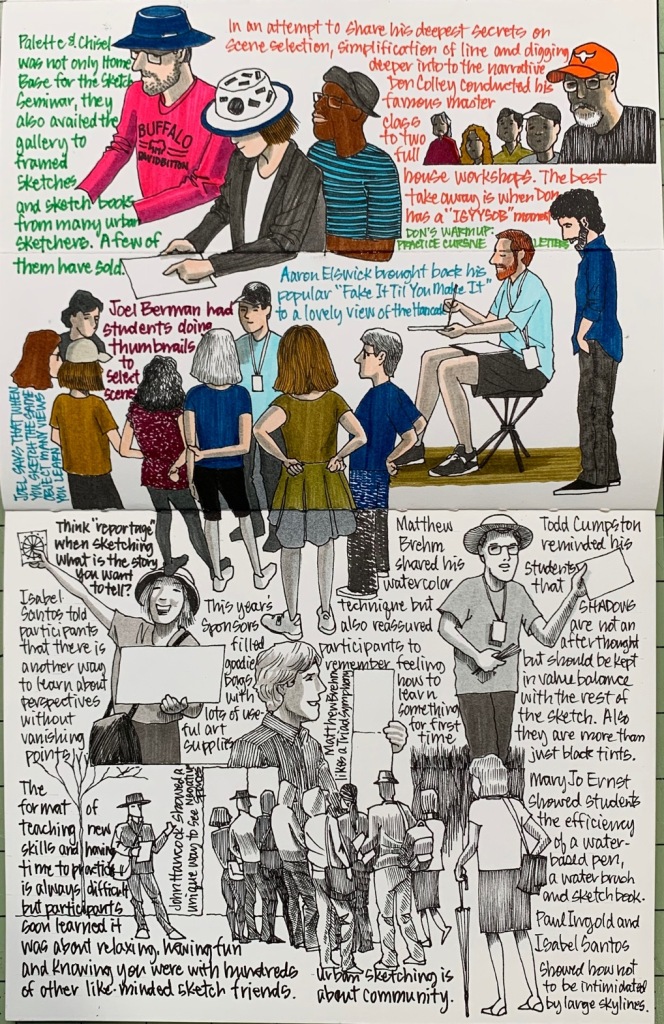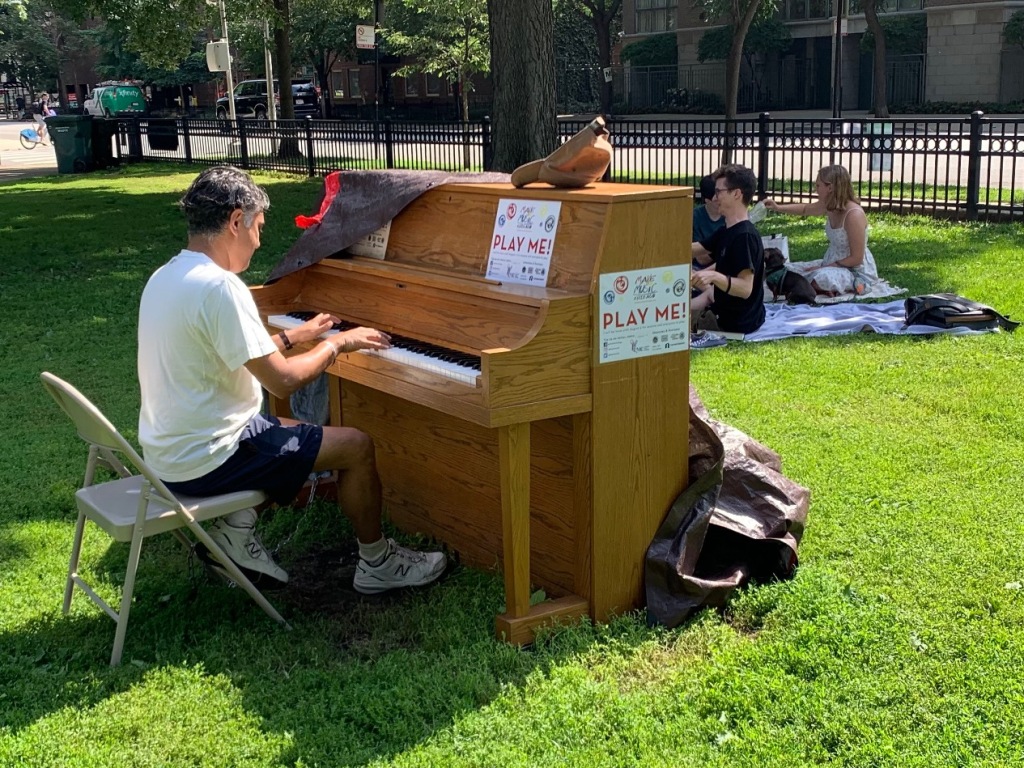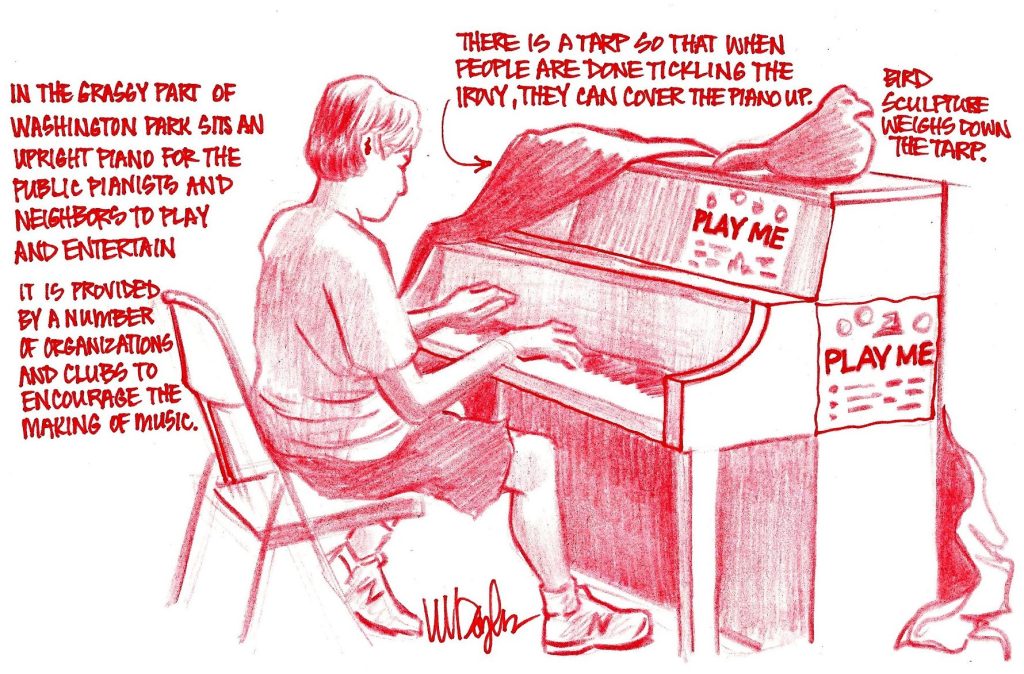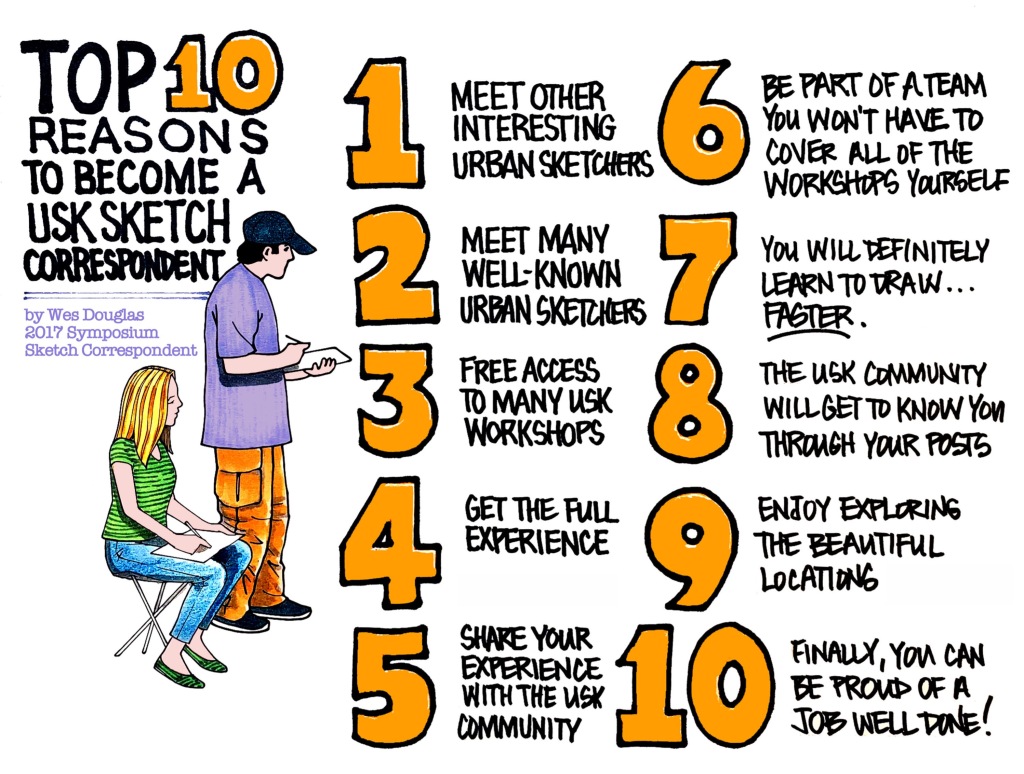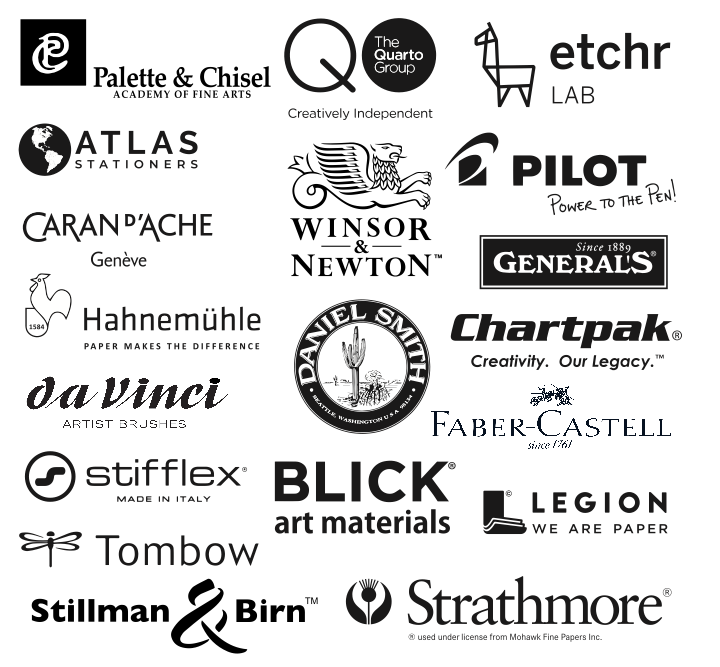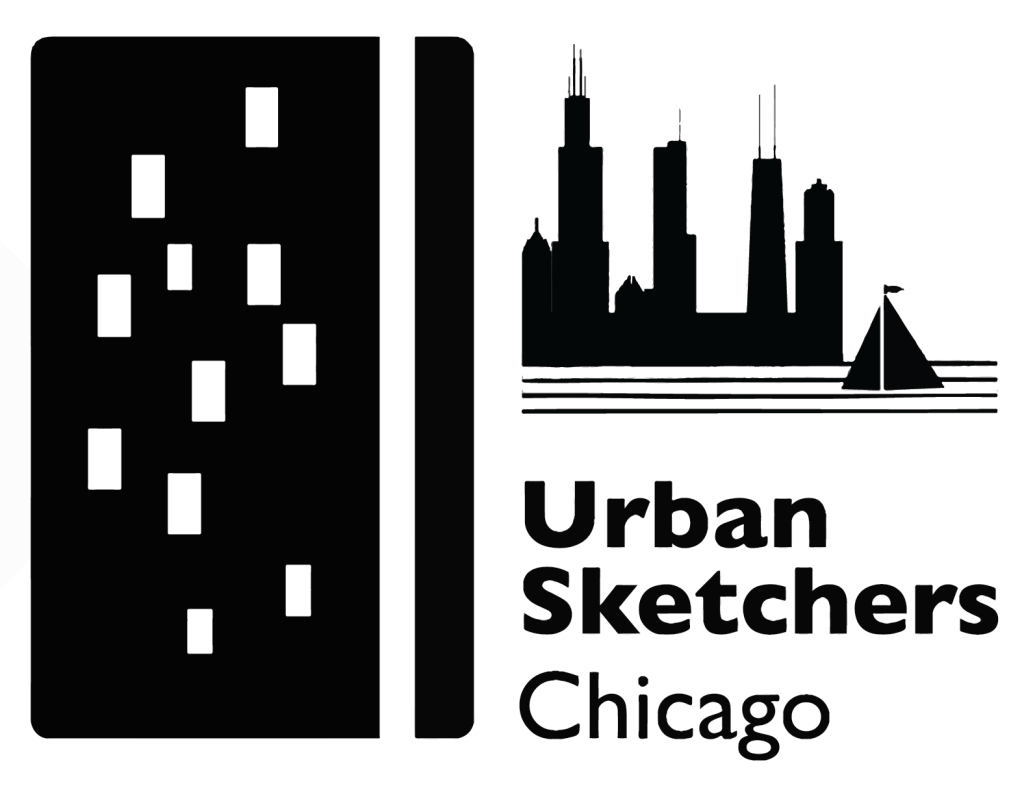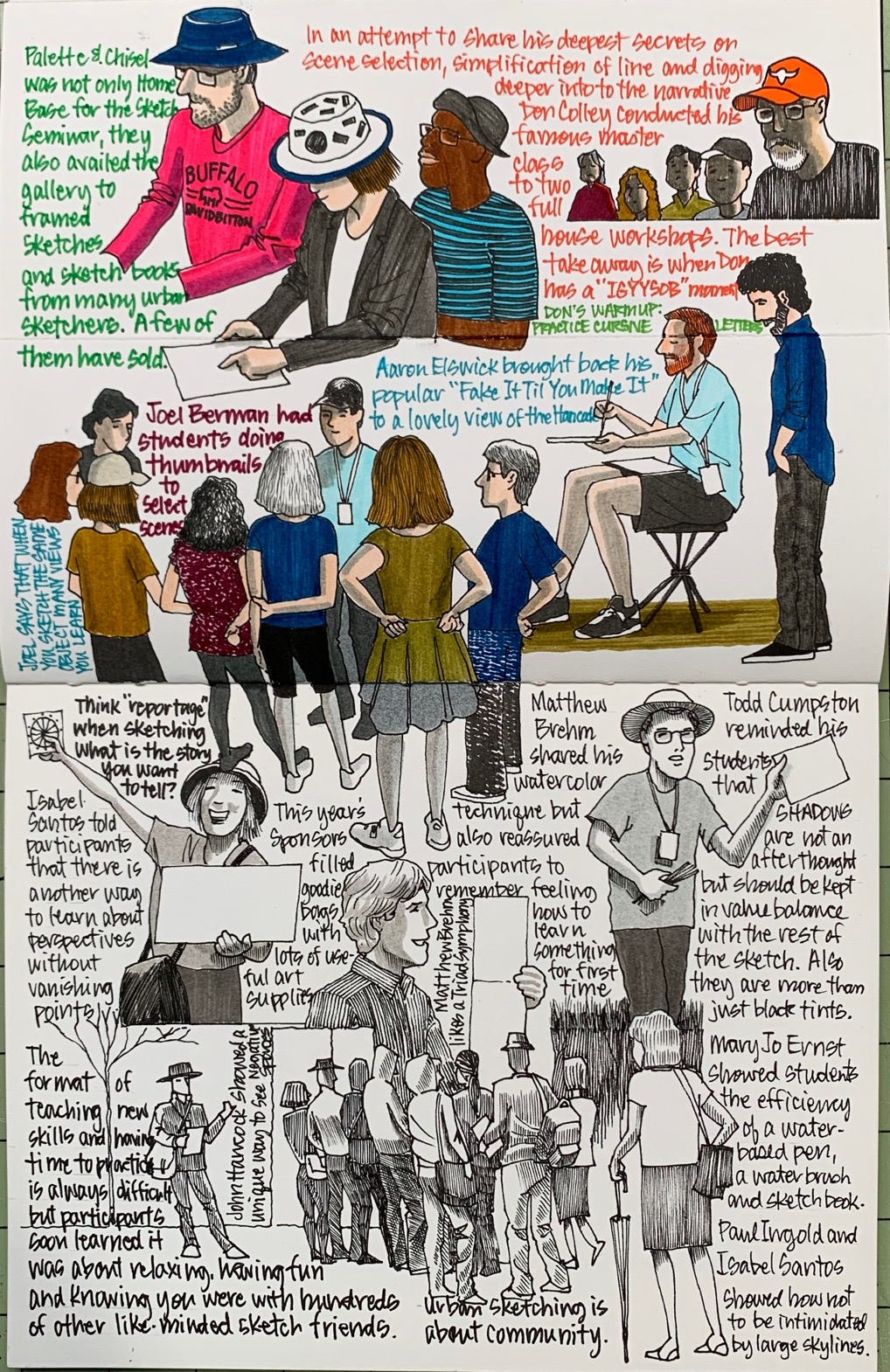By Wes Douglas

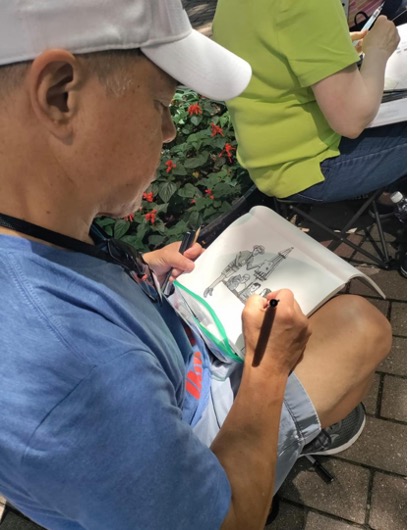
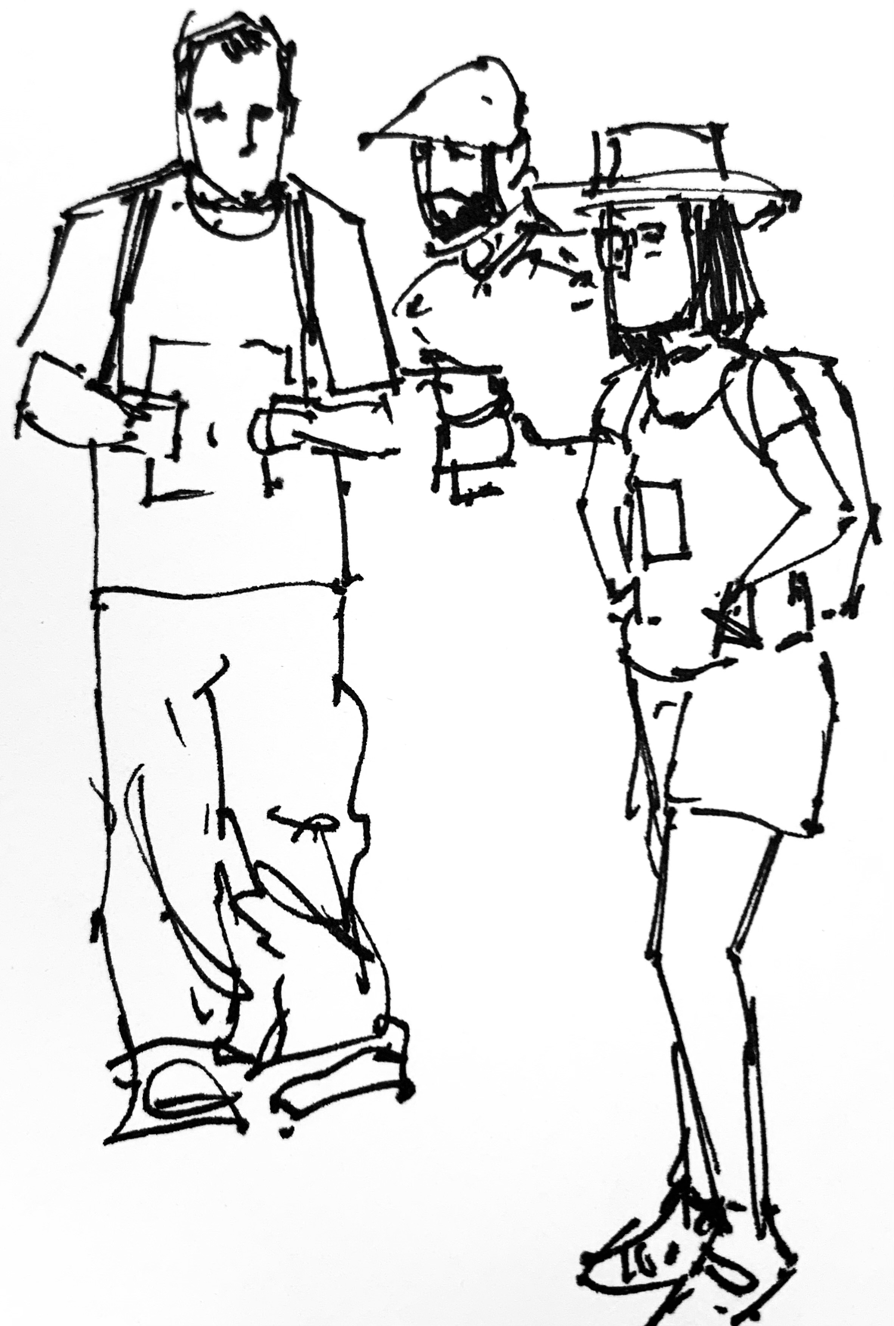
Opening day for the USk Chicago Sketch Seminar 2023 began beautifully. Great turnout for those checking in and getting their goodie bags filled with freebies and samples from our generous sponsors. The Sketch Seminar had to take a break during the dreaded COVID years (2020, 2021) and a soft return in 2022. So it was wonderful to see all of the smiling faces (without masks) ready to pick up where we left off in 2019 and at full speed.
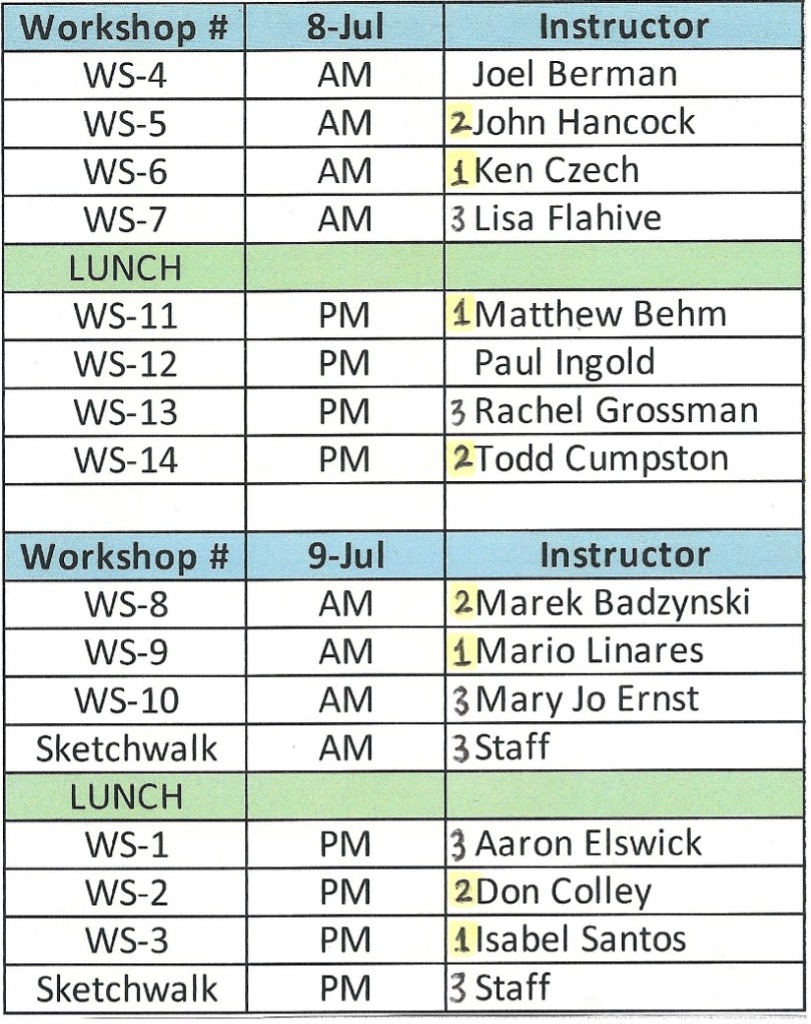
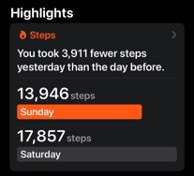
When covering an event such as this, the important thing to remember is that planning out your route will be critical to your success. Here is how I planned each day.
At left, I have all of the activities listed by their day part. I like to go to the farthest one first, then work my way inward for each morning session and then afternoon session. I also needed to prioritize which workshops I definitely wanted to see that were new to me (especially the outside visiting instructors).
Then I tried to hit as many as I could. Each workshop is about 3 hours long and with some quick calculations, I figured I could invest no more than 45 minutes per workshop (less if I could). Another thing I learned is to tap into others to help you. It is a tall task to be in all places at the same time, but other sketchers are eager to help. And having extra sets of eyes gave me the vantage point when I could not be there. I get the basic sketch down in pen and ink and move along. I use lunch breaks and dinner to do any clean ups and I kept my palette very limited to black & white and greys.
One of the things that most people under-estimate is the amount of walking you will do, going from one workshop to another. The graphic at left shows just how many steps I put in for both days. In the past, I have used a push scooter to get around quicker—which is great—but I was trying to travel light this time.
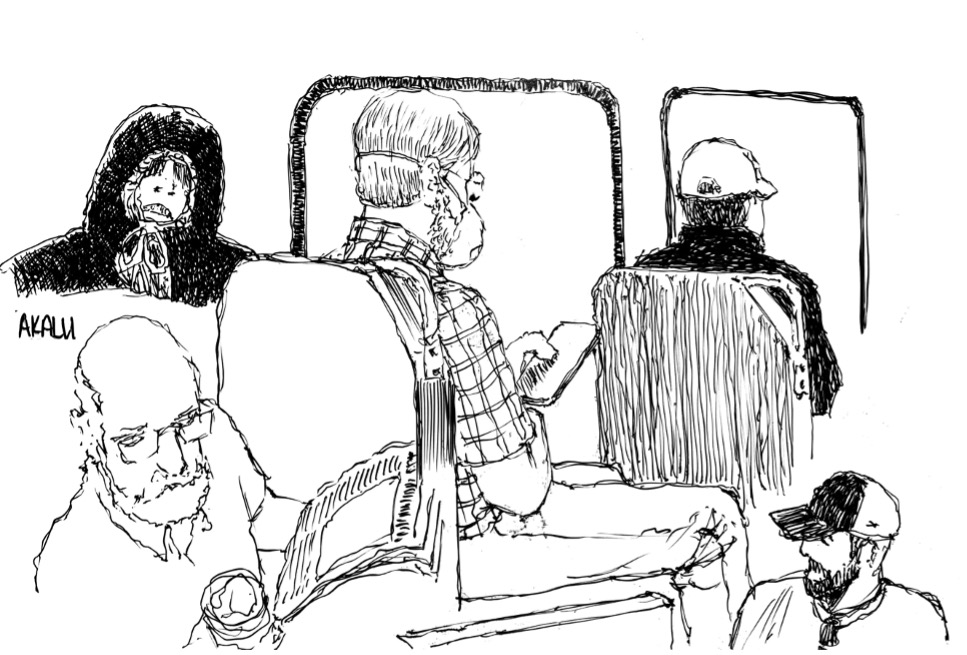
Another thing I like to do (and this will sound strange) is that I like to warm up before spending the day sketching lots of people in various workshops. I do this because I like to get the cobwebs out before that first workshop of the day. Since I was commuting to the Sketch Seminar from the suburbs, I was able to find plenty of subjects on the Metra train.
In these workshop sketches, one of the things you will notice is that I made up these little “hand holding sign” images for each of the workshops. Since I was the person who created the full size sign graphics, I added the graphics to a blank sign and hand sketch I did. This saved me a lot of time whenever I popped into a workshop. Glue stick it in the corner and start sketching.
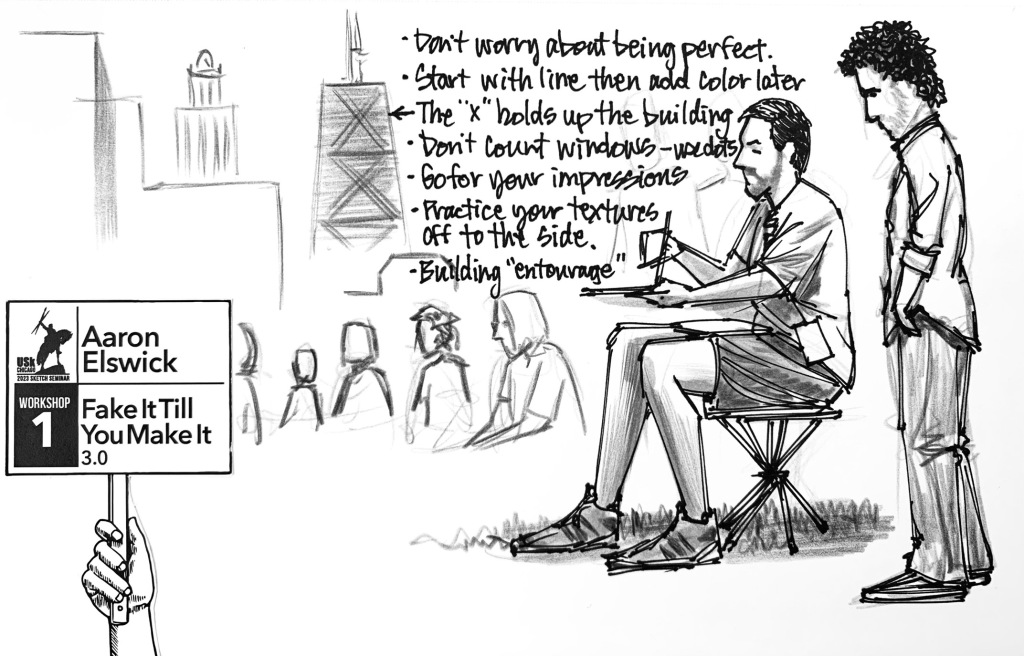
Workshop 1: “Fake It Till You Make It 3.0”
Instructor: Aaron Elswick
Highlights:
- Develop an understanding of the basic principles of perspective drawing
- Learn how to view the urban environment as a line drawing and how to break down complex scenes into simple forms
- Learn how to save time and build confidence by not using an eraser
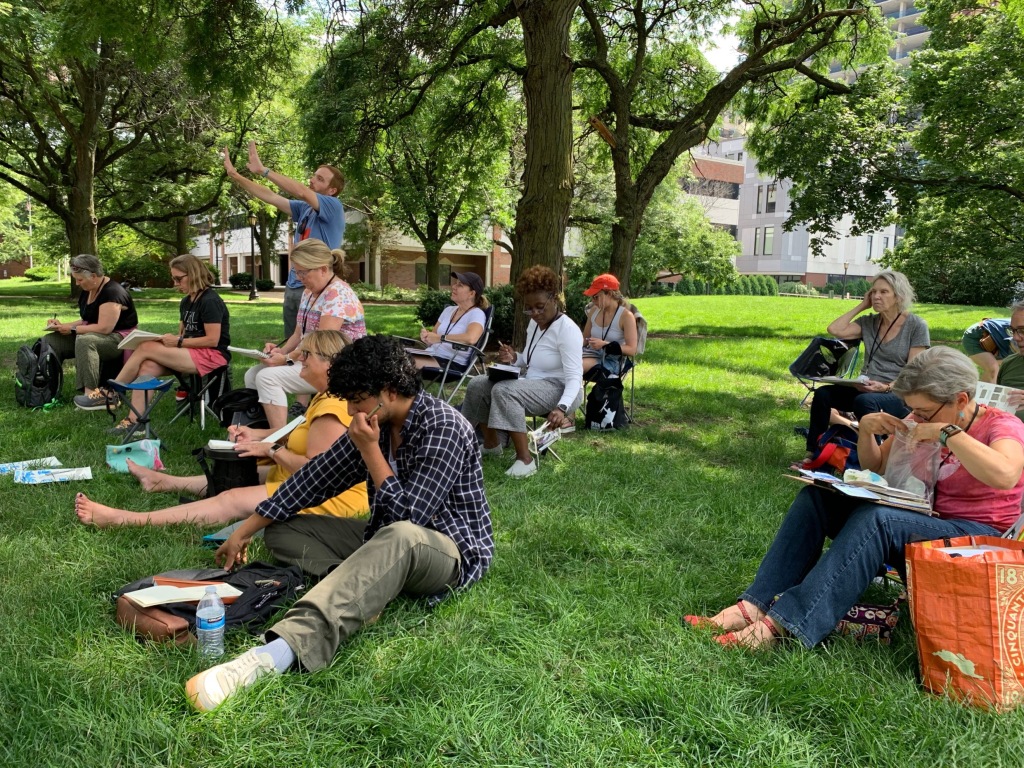
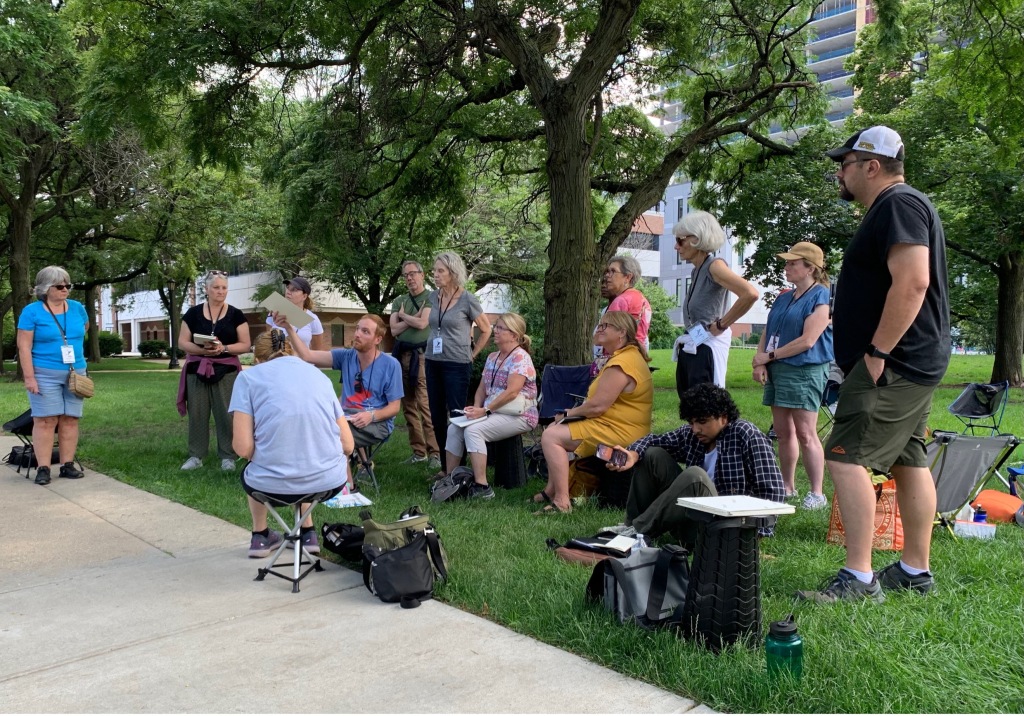
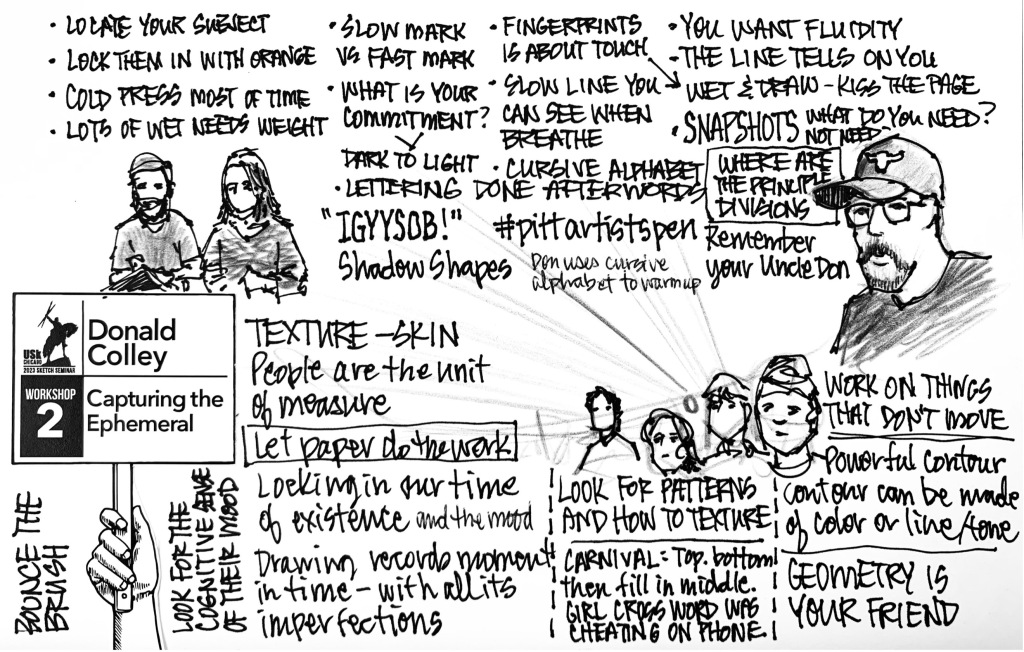
Workshop 2: “Capturing The Ephemeral”
Instructor: Don Colley
Highlights:
- Develop a better understanding of the concept of efficiency while drawing dynamic, bustling situations
- Learn what to focus on and what ot omit in order to quickly get the essential story
- Develop skill sets that help the artist make the most of their time and tools
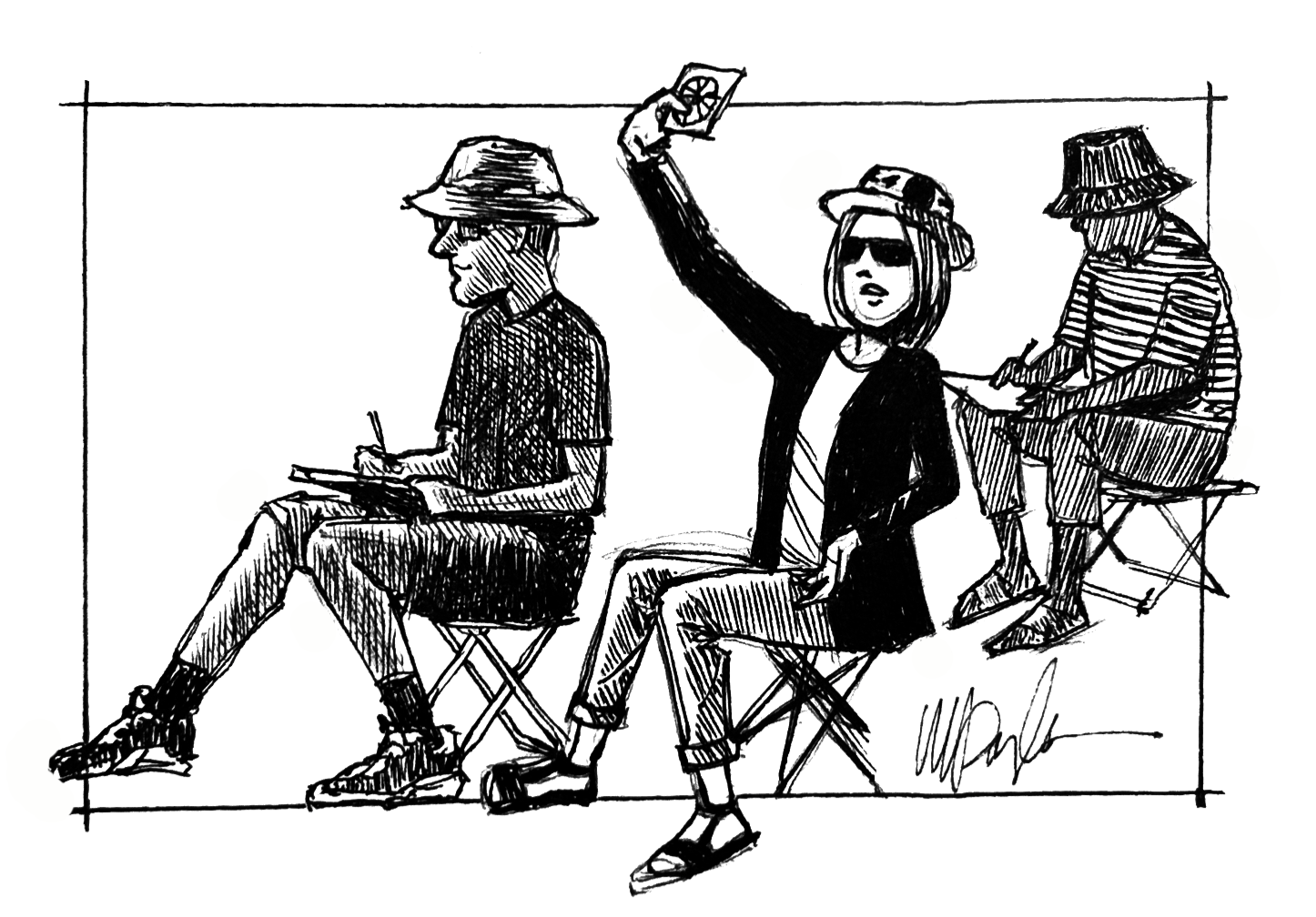
Workshop 3: “Sketching Buildings for the Fearful”
Instructor: Isabel Santos
Highlights:
- Learn to draw buildings, both simple and complex
- Gain confidence in their approach to drawing buildings
- Understand perspective angles by using the Non-Architect Clock
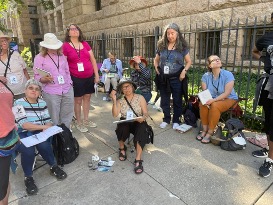
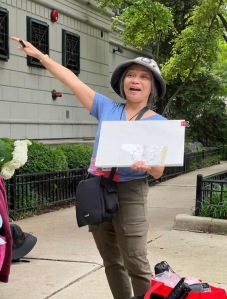
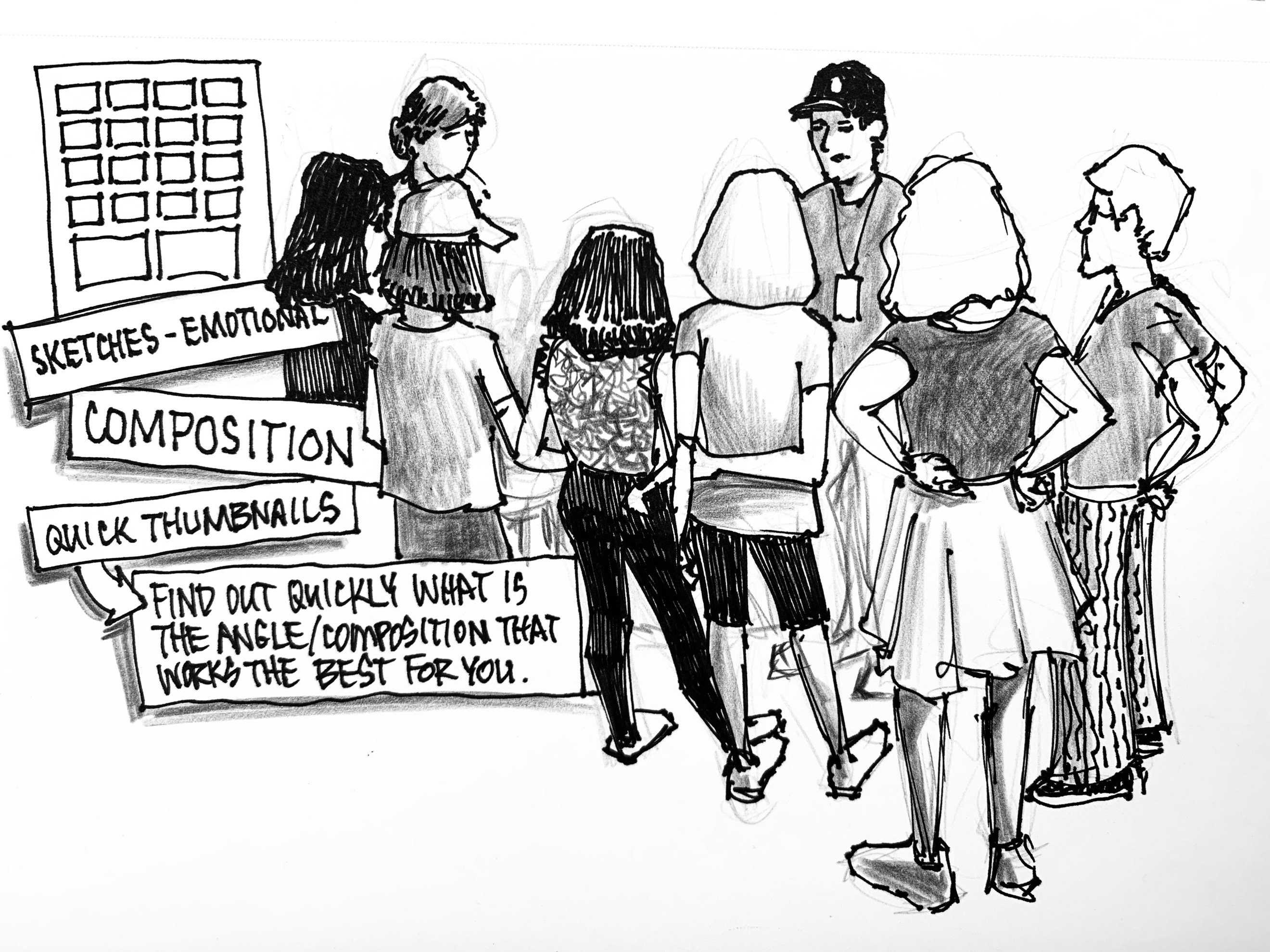
Workshop 4: “How to Sketch Like An Architect”
Instructor: Joel Berman
Highlights:
- Start with small sketches for quick looks at possible composition layouts
- Learn to use thumbnail sketches to find the best view of your subject
- Work on building up your speed in composing and sketching architecture
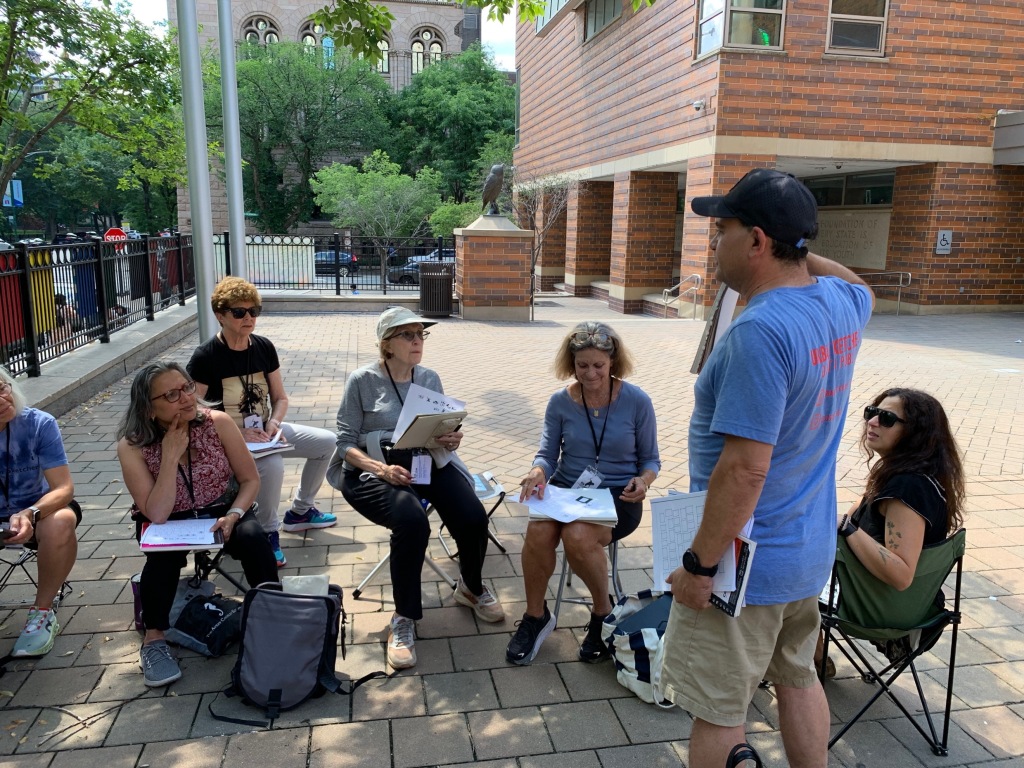
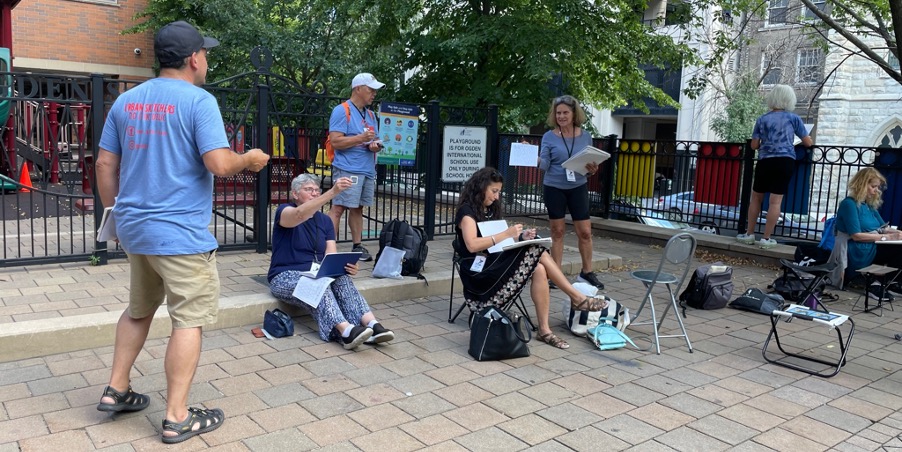
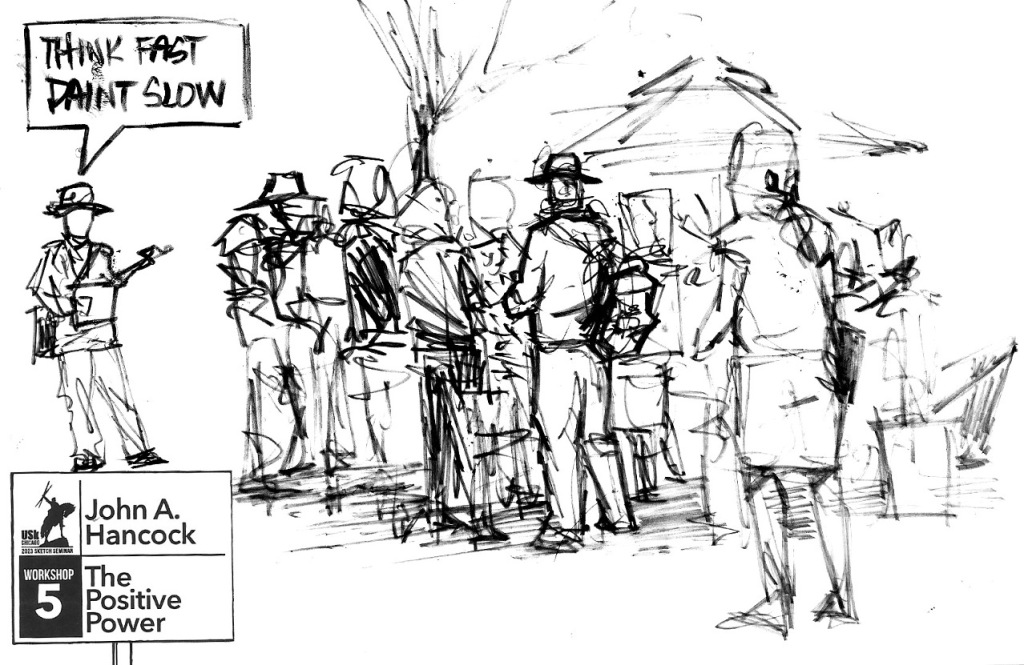
Workshop 5: “The Positive Power of Negative Space in Watercolor Sketching”
Instructor: John A Hancock
Highlights:
- Learn to choose and edit a view from a location
- Plan and incorporate the use of negative space design into a sketch
- Learn the basic techniques for using a limited color palette/achieving visual richness
- Learn basic techniques for using a less limited palette while retaining simplicity
- Learn to find strategies that balance visual richness with simplicity in sketches
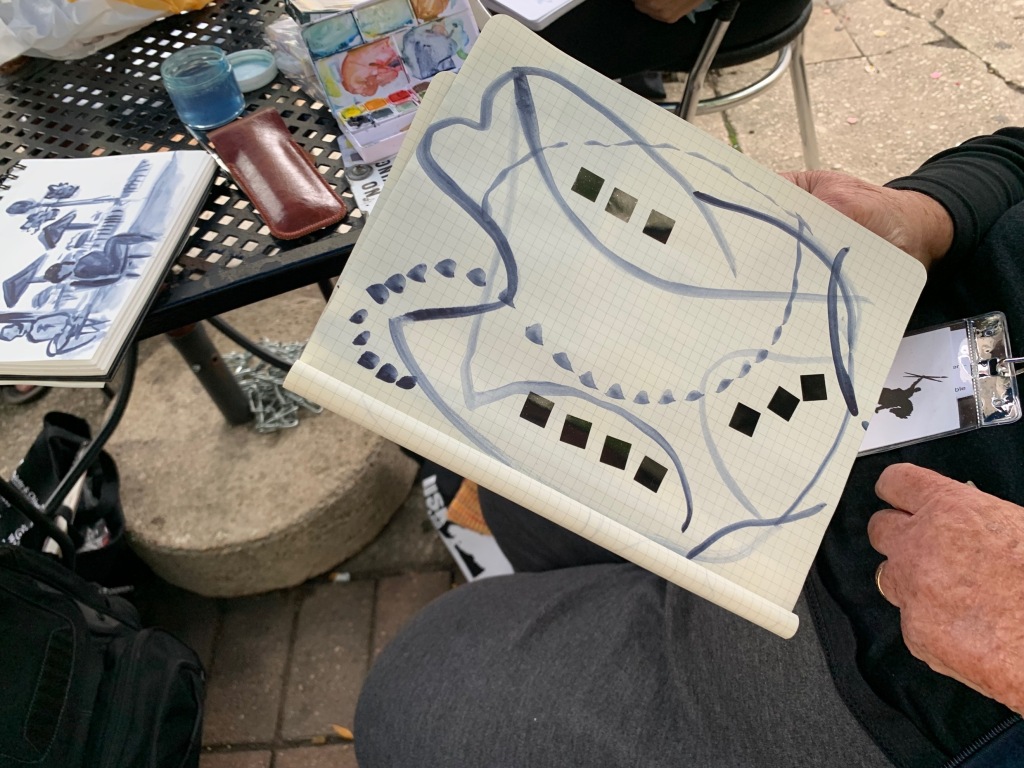
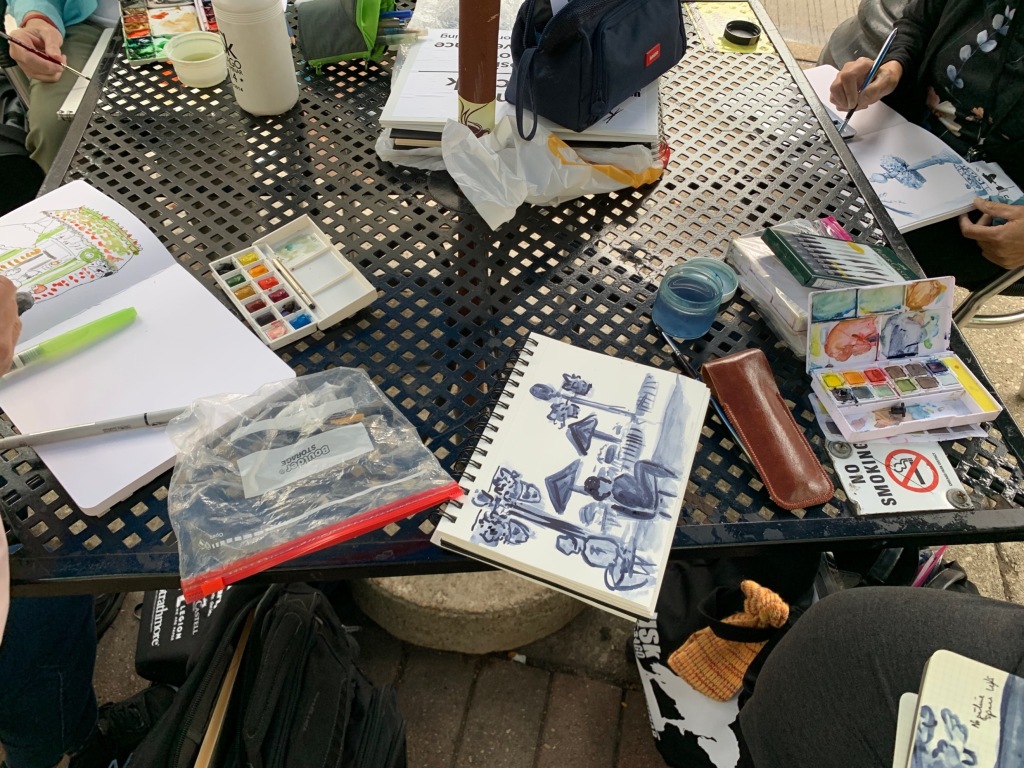
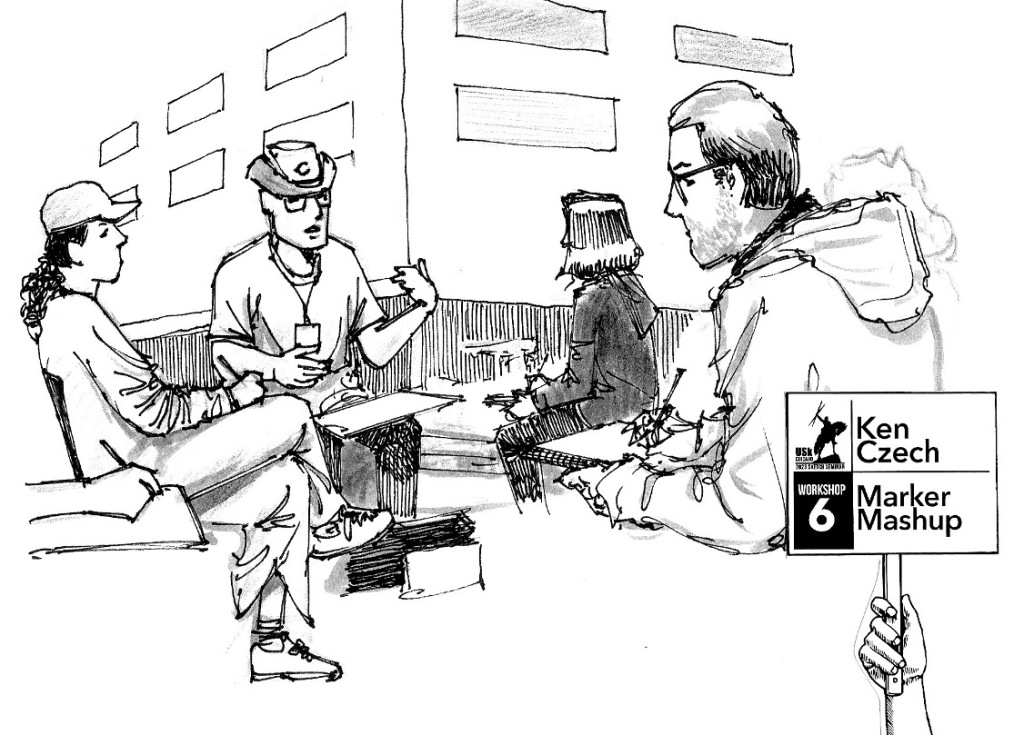
Workshop 6: “Marker Mashup”
Instructor: Ken Czech
Highlights:
- Learn to use marker techniques to render different surfaces (glass, wood, foliage, etc)
- Learn a variety of approaches when using a secondary tool (pencil, pen, Microns)
- Learn to apply the mashup approach to any subject
- Eliminate nervous, timid, unsure handling of the medium—boldly attack the paper
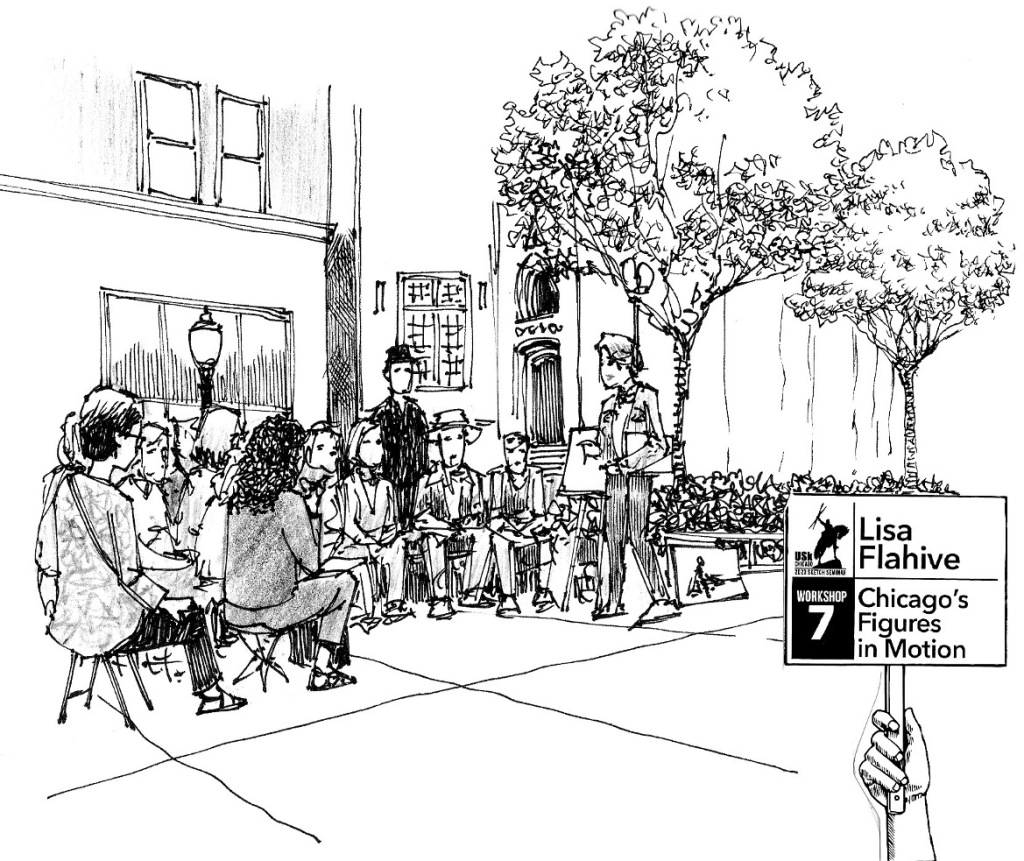
Workshop 7: “Chicago’s Figures in Motion”
Instructor: Lisa Flahive
Highlights:
- Learn to confidently capture the energy of figures in the city
- Use loose, gestural lines
- Learn to carve figures out of negative space
- Use figures to create a sense of depth
- Connect figures and shapes to unify the sketch—use value to direct the viewer’s eye
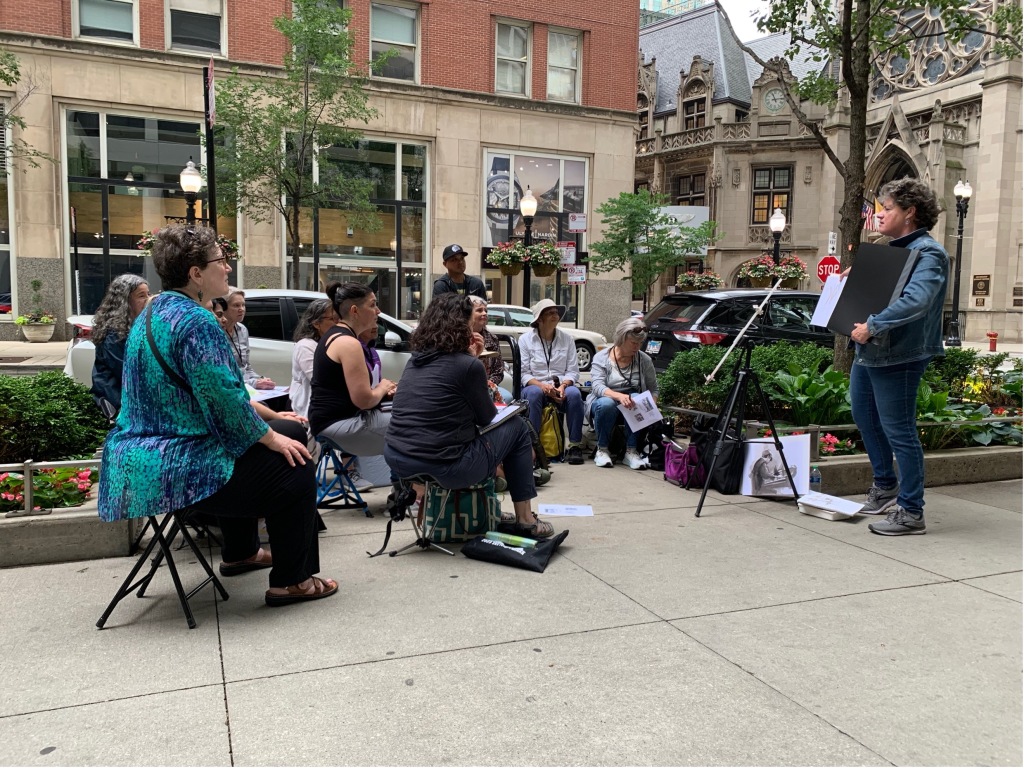
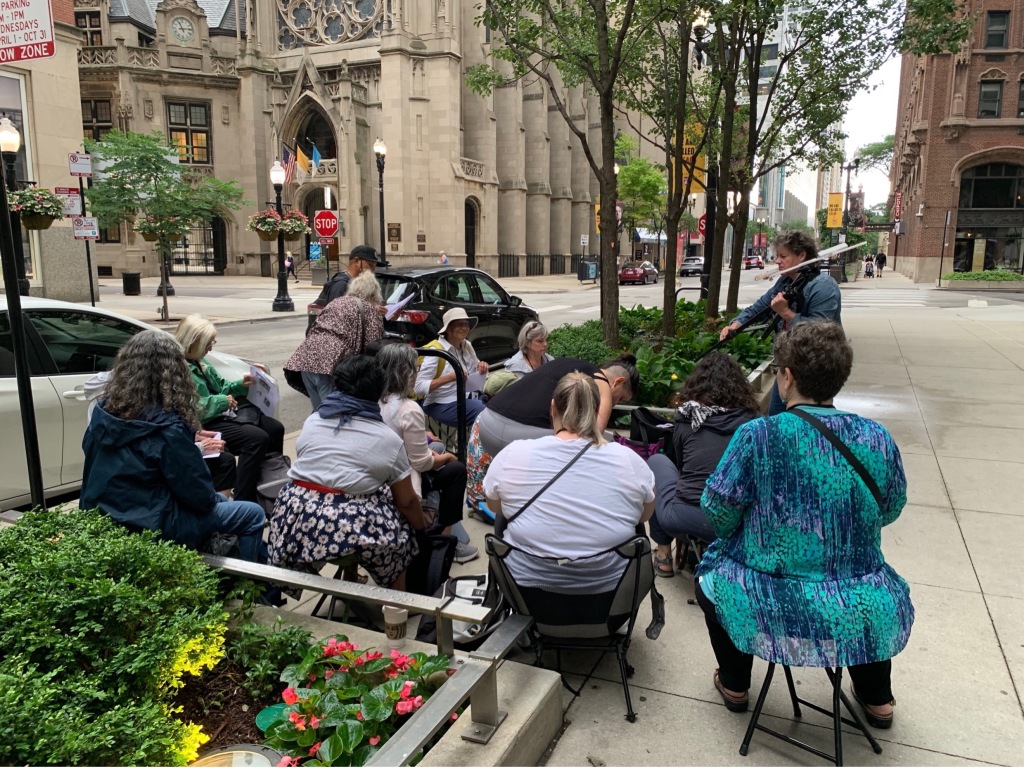
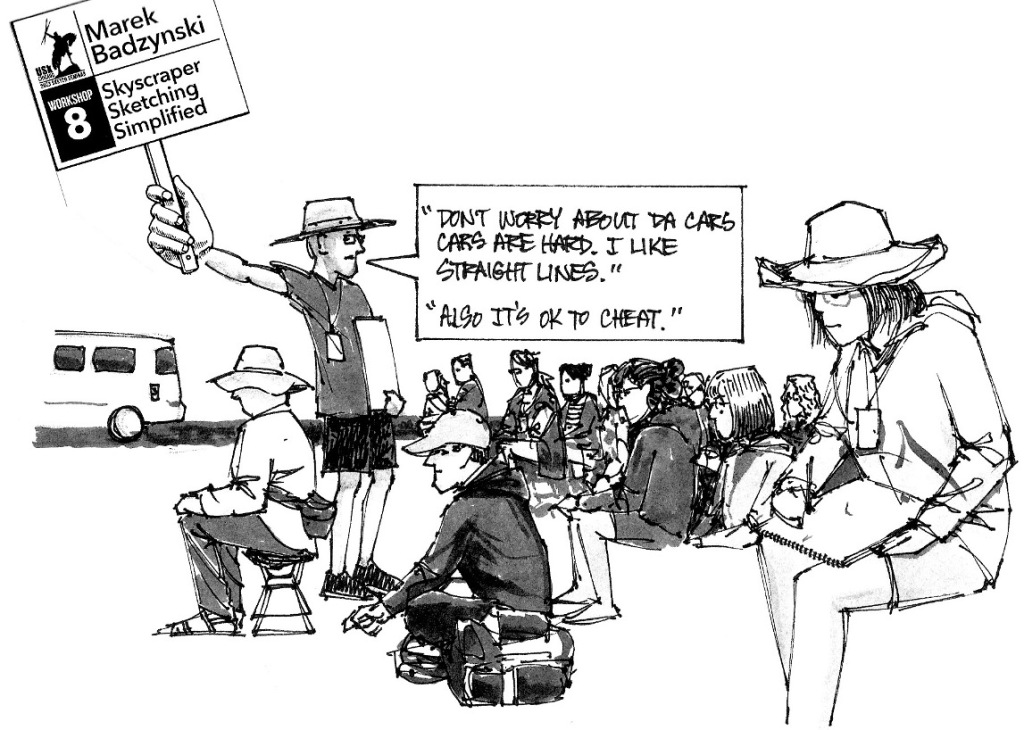
Workshop 8: “Skyscraper Sketching Simplified”
Instructor: Marek Badzynski
Highlights:
- Learn and practice techniques for simplifying cluttered scenes
- Learn how to sketch in ink quickly
- Learn to recognize foreground, middle ground and background
- Add value to represent a third dimension
- Replace a value with a color pigment mix
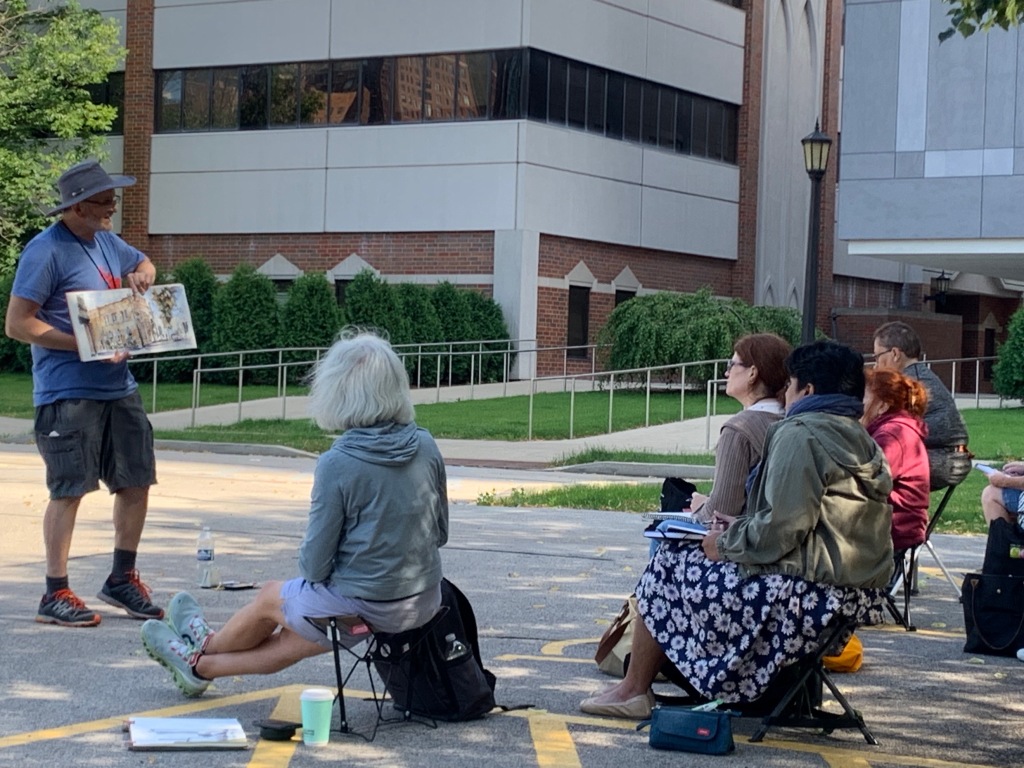
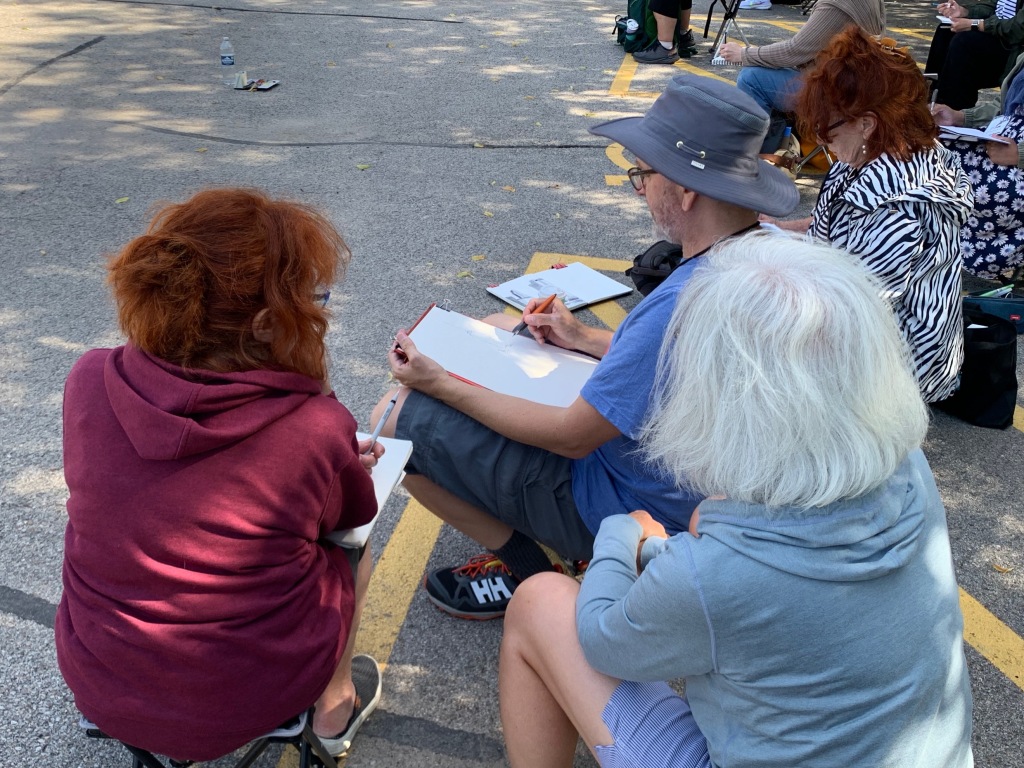
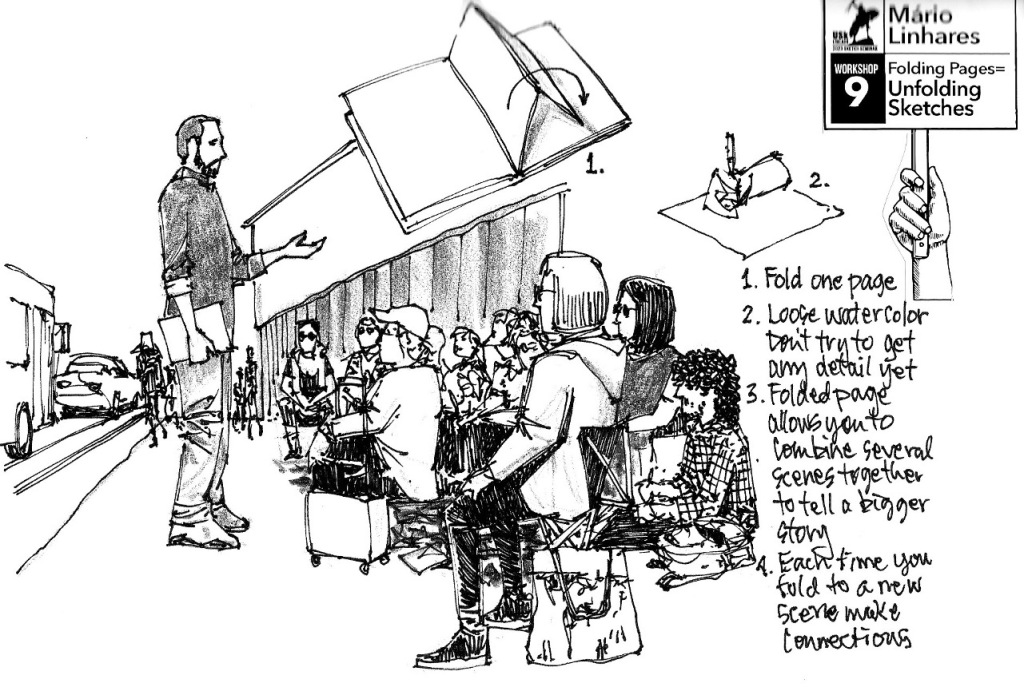
Workshop 9:
“Folding Pages = Unfolding Sketches”
Instructor: Mario Linhares
Highlights:
- Learn how to use the sketchbook as a tool
- Improve drawing skills
- Learn how to use the sketchbook as a laboratory to do experiments
- Experience the advantages of group learning and see the many paths to success
- Combine different perspectives of the city in only one drawing composition
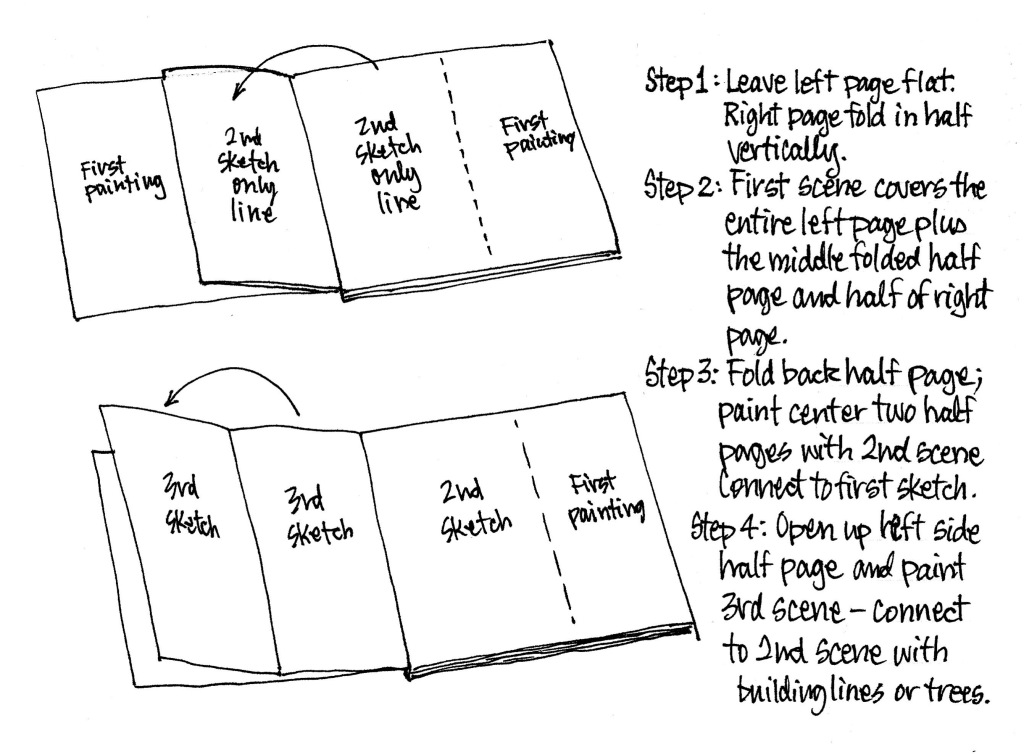
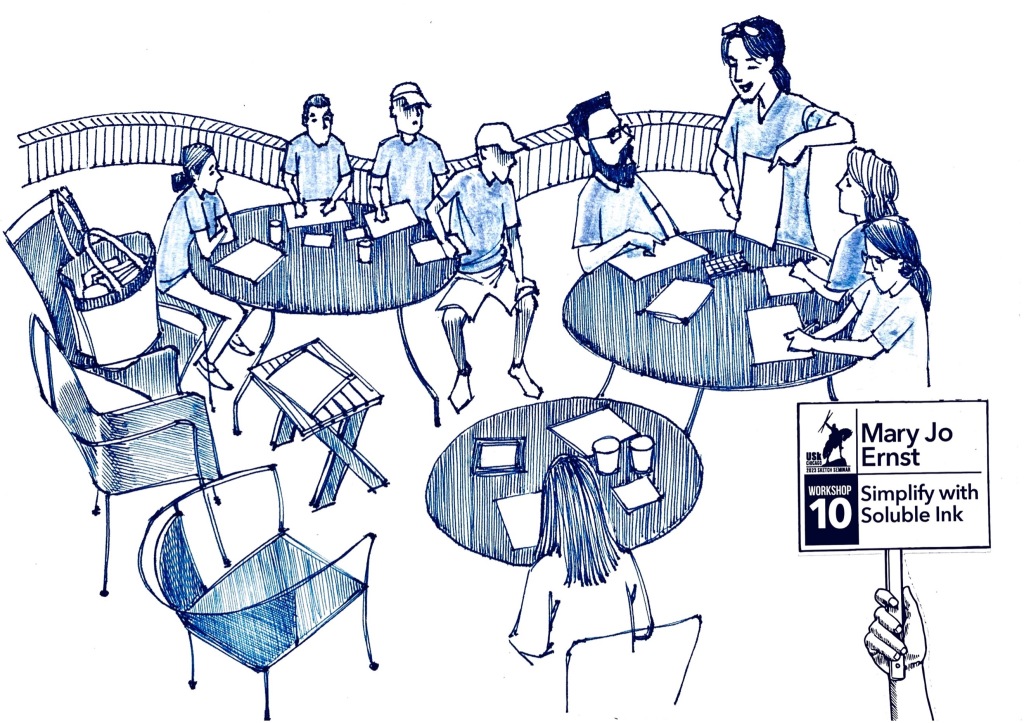
Workshop 10: “Simplify with Soluble Ink”
Instructor: MJ Ernst
Highlights:
- Learn and easy and quick style of sketching
- Learn to add expression and mood to sketches using a variety of lines and values
- Learn to embrace the unexpected results of soluble inks, removing the pressure to create the “perfect” sketch
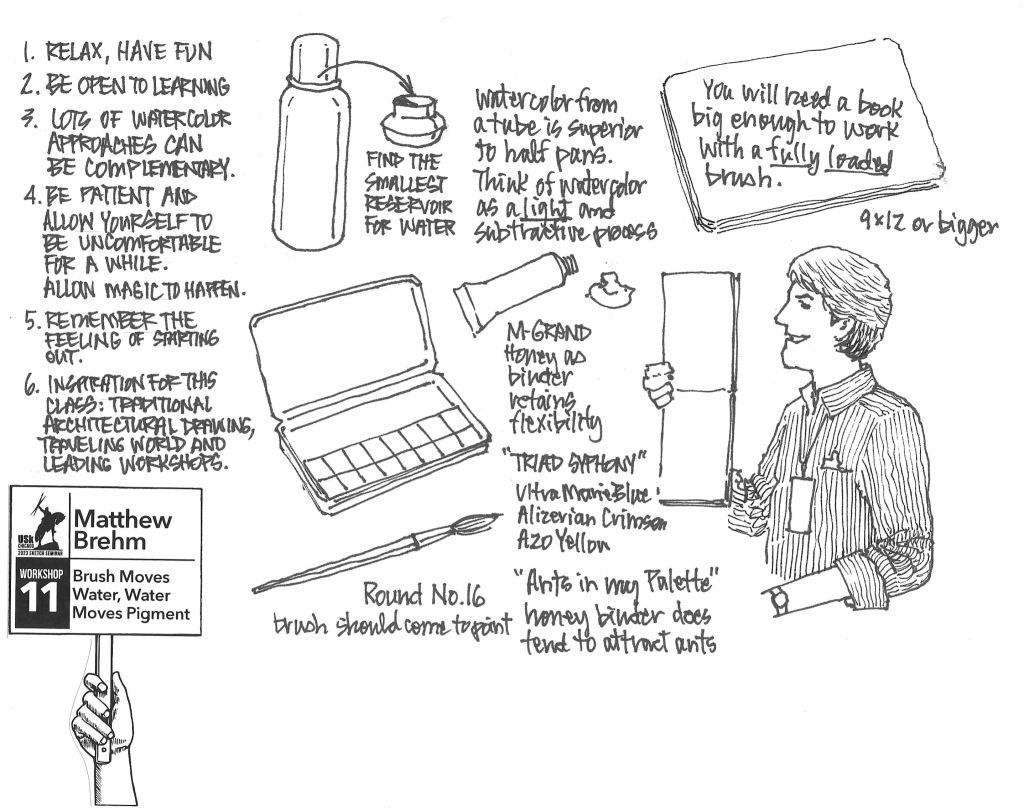
Workshop 11: “Brush Moves Water, Water Moves Pigment”
Instructor: Matthew Brehm
Highlights:
- Learn skills that lead to effective watercolor sketches
- Learn brush and water handling techniques to achieve transparent, luminous washes
- Learn essential was techniques including layering washes
- Mix color on the palette and on the page
- Adopt a strategy of subtracting light from the page
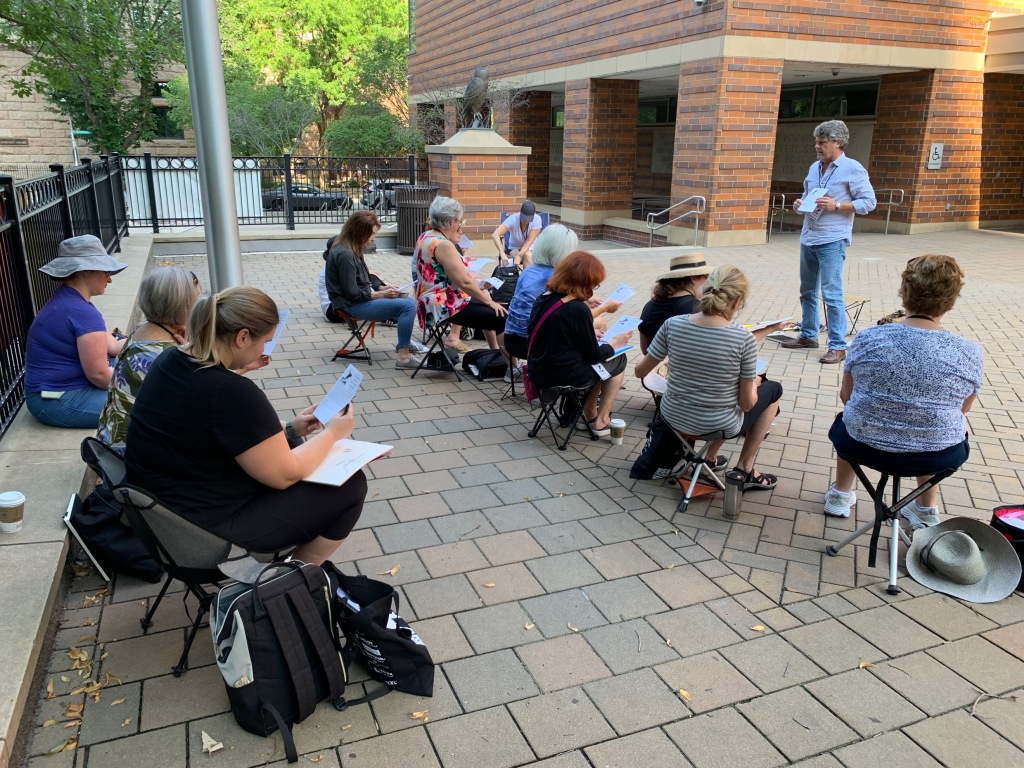
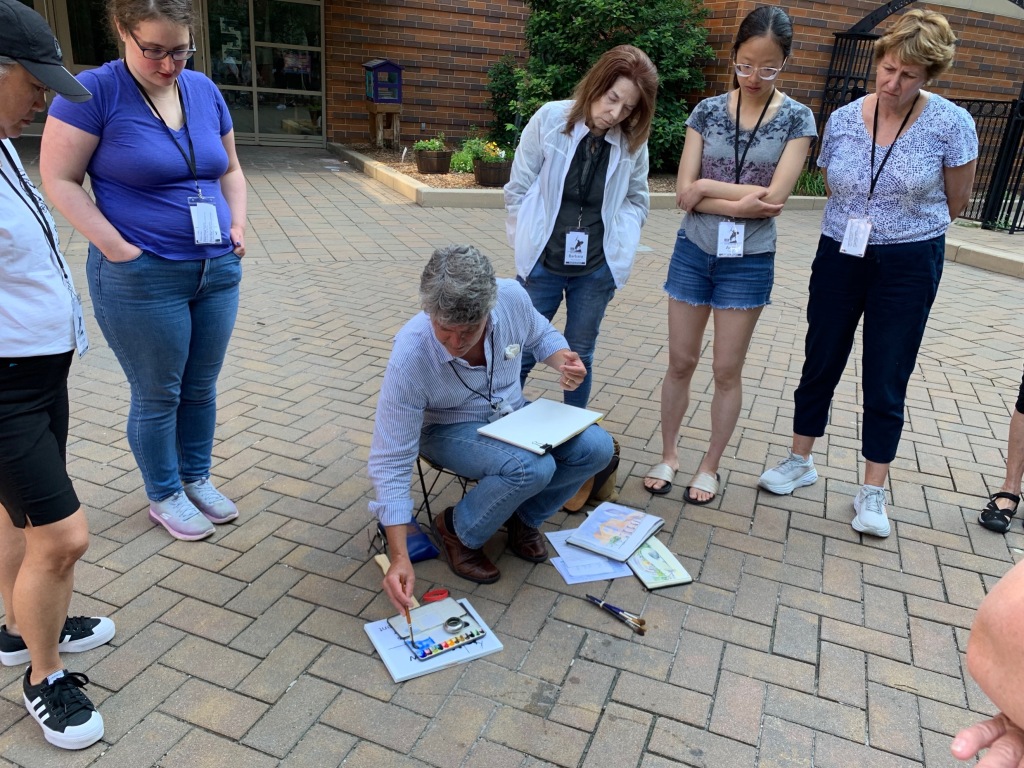
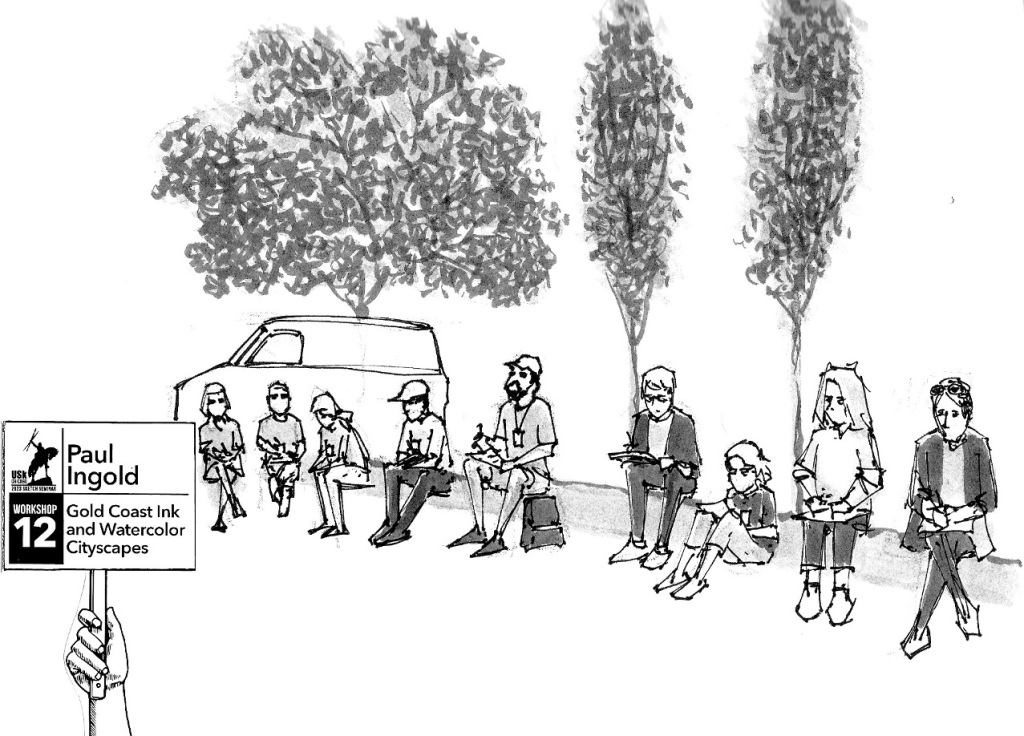
Workshop 12: “Gold Coast Ink and Watercolor Cityscapes”
Instructor: Paul Ingold
Highlights:
- Learn to key on main subjects (focal point of the sketch) in a busy atmosphere
- Create a simple line sketch with pen and ink
- Apply a limited brush pass to the sketch with a focus on staying true to the color wheel
- Develop an understanding of how similar color values can have completely different pigment properties
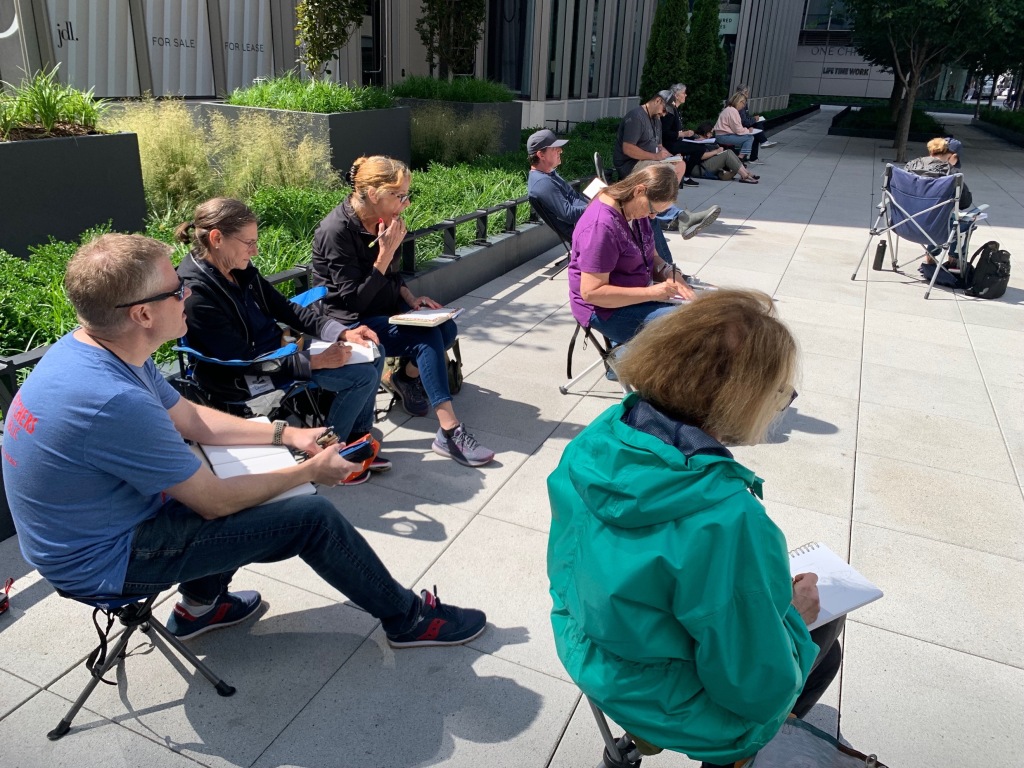
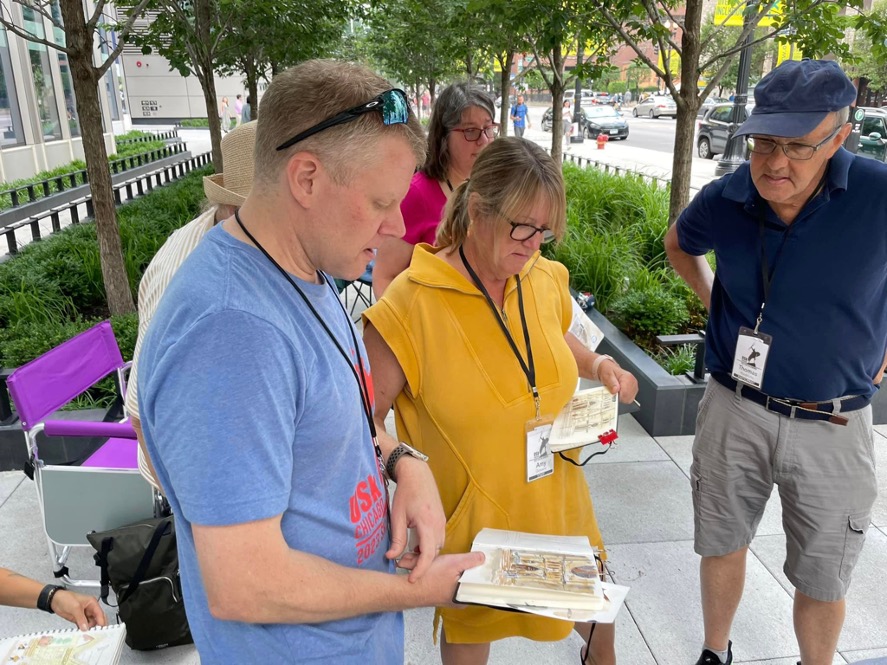
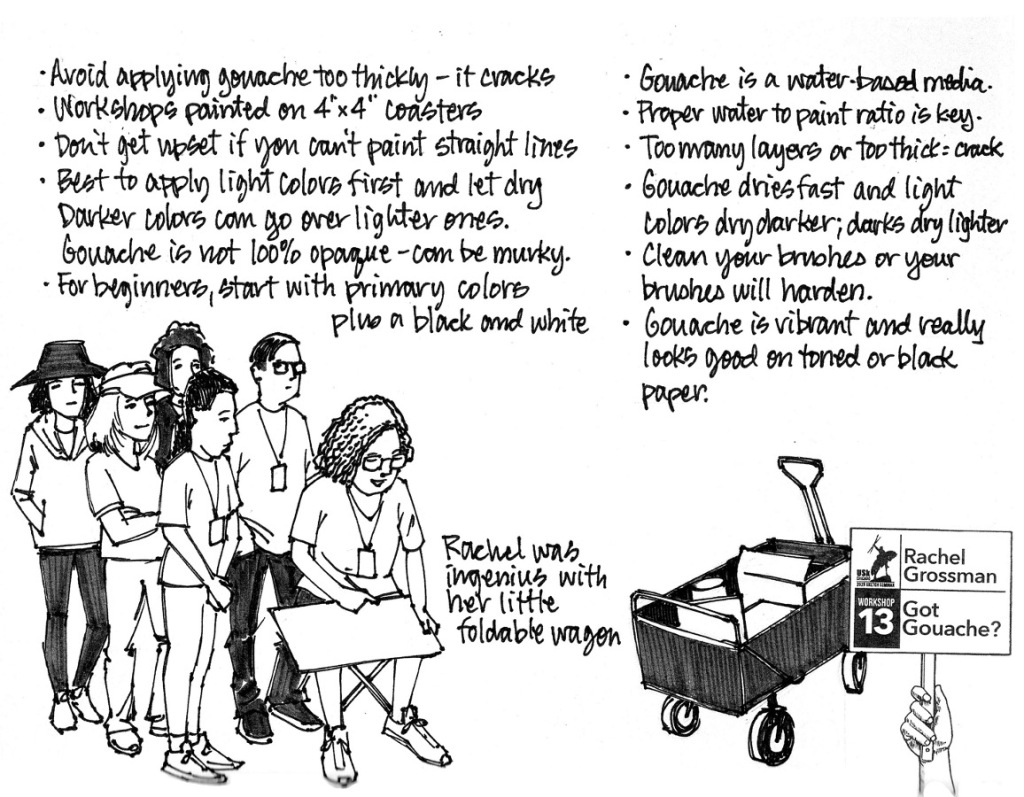
Workshop 13: “Got Gouache?”
Instructor: Rachel Pasch Grossman
Highlights:
- Gain an understanding of the advantages and disadvantages of gouache as a medium
- Learn to control the critical paint-to-water ratio
- Learn to approach a scene thinking about shapes instead of lines
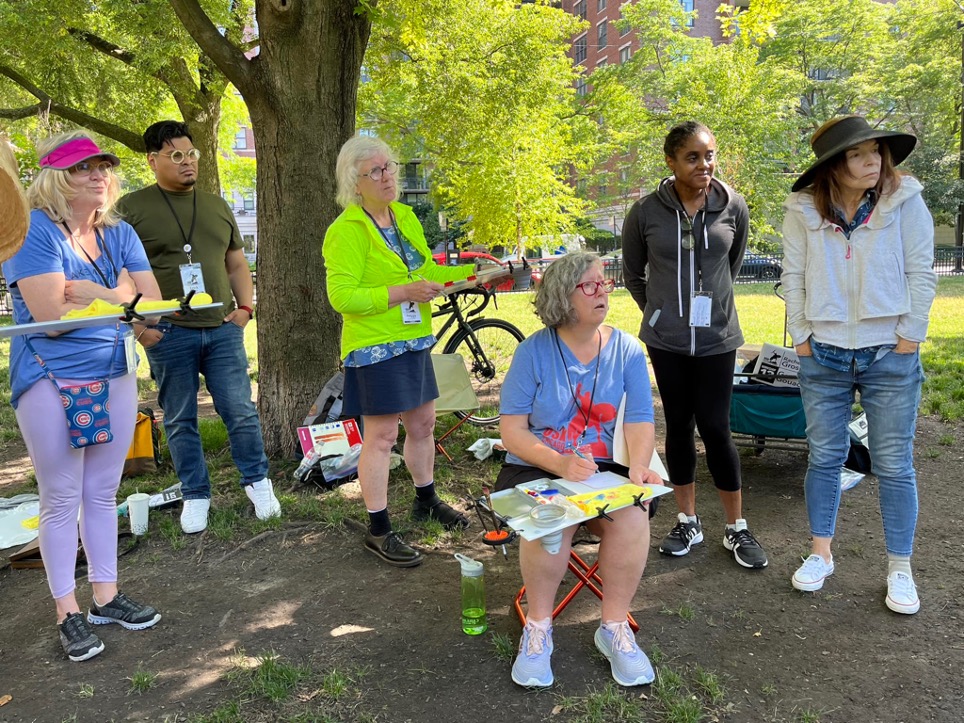
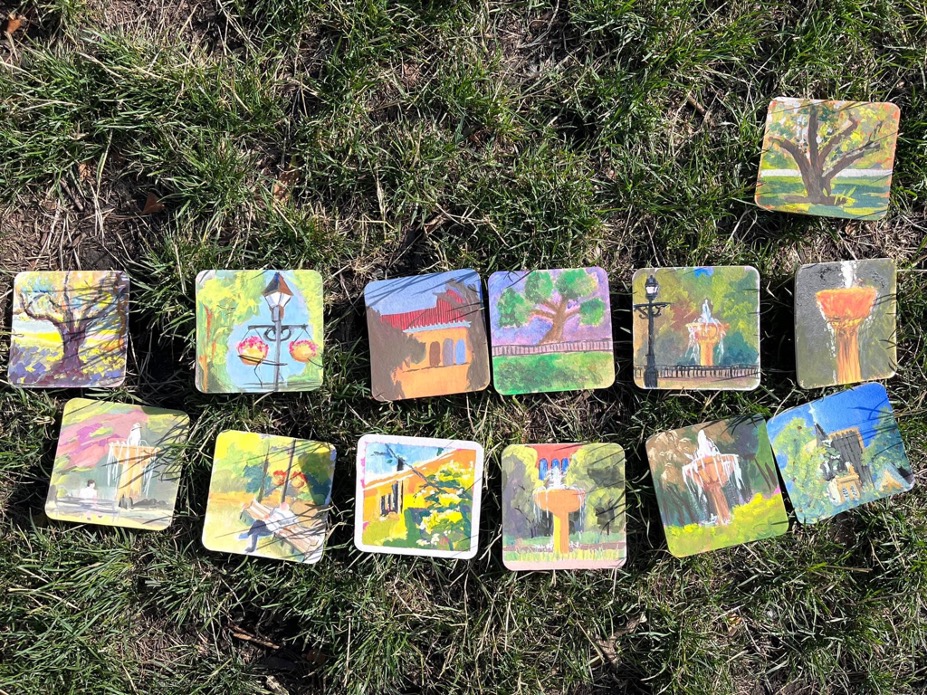
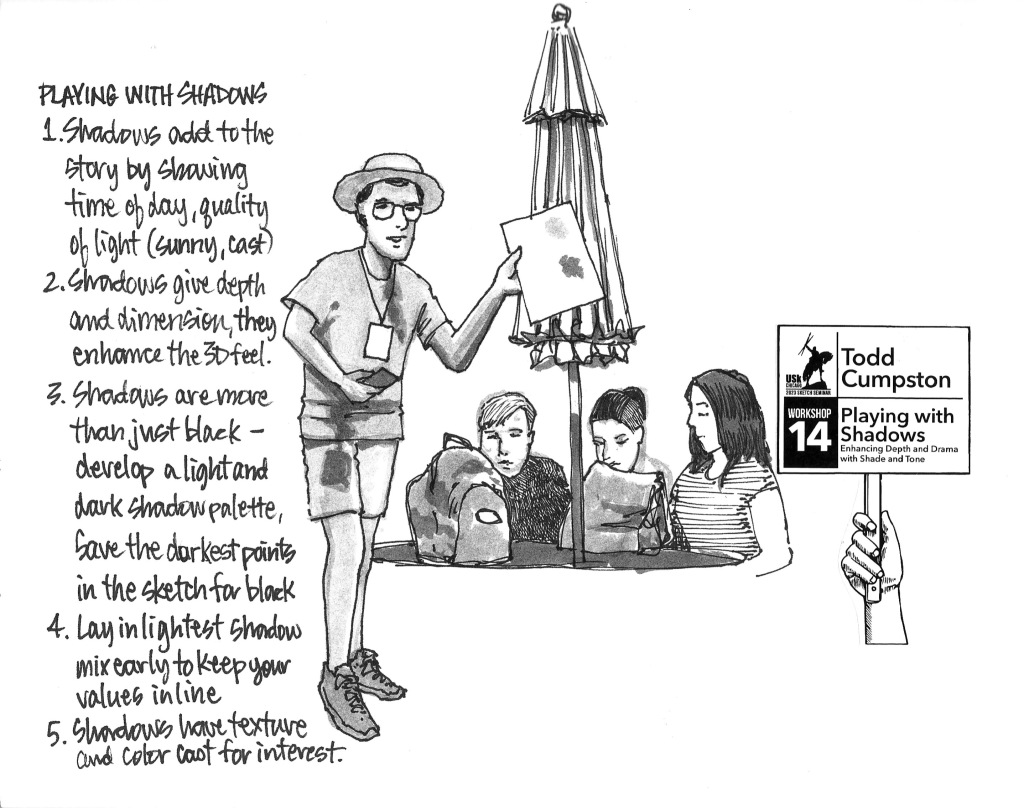
Workshop 14: “Playing with Shadows, Enhancing Depth and Drama with Shade and Tone”
Instructor: Todd Cumpston
Highlights:
- Learn to use shadows to focus attention, transmit information, and create drama
- Learn to use shadows to enhance the story of the sketches
- Explore techniques in different mediums to quickly render shadow and shapes
- Explore rendering a scene with “shadows first” to add variety
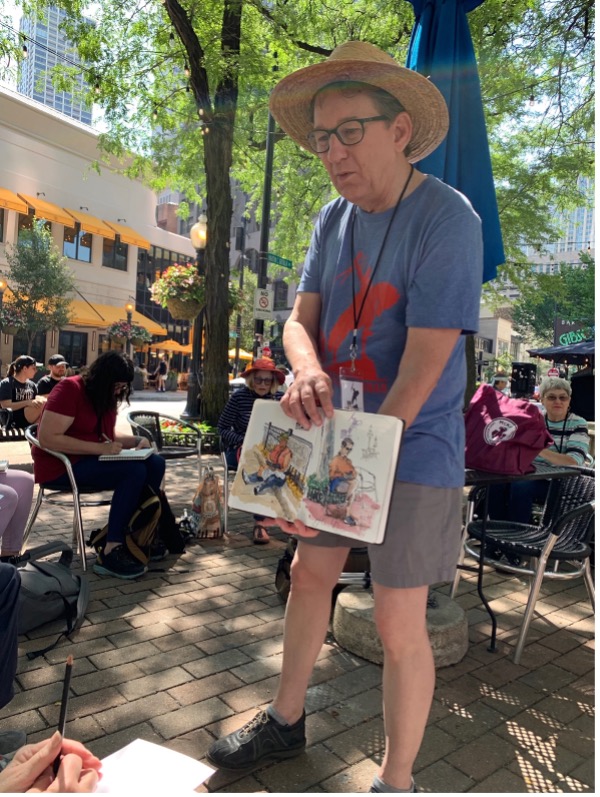
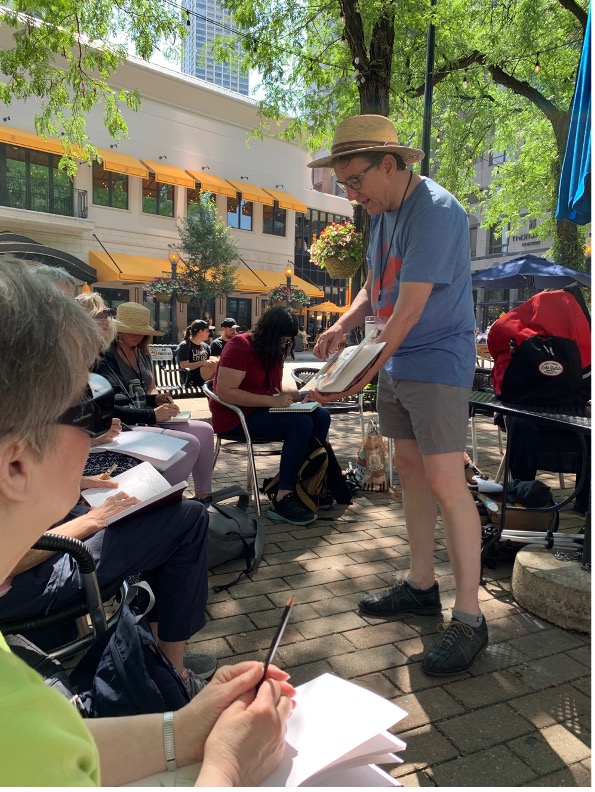
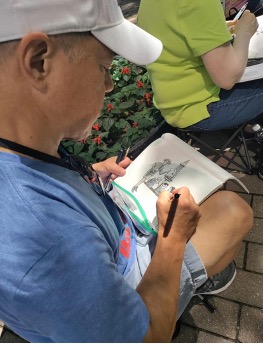
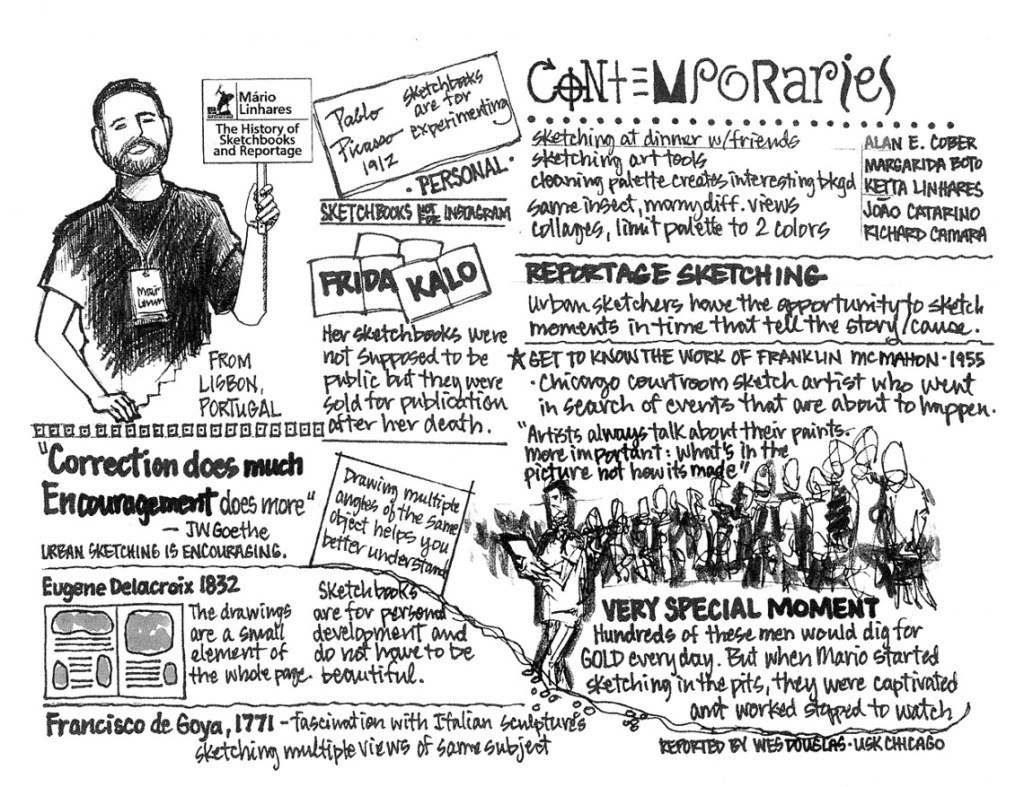
Lunchtime Lecture: “The History of Sketchbooks and Reportage”
Instructor: Mario Linhares
Highlights:
Mario Linhares treated the entire Seminar attendees to a presentation he had prepared on the history of the sketchbook and the importance of reportage sketching. The main gallery at Palette & Chisel was packed to capacity as the audience marveled at the incredible amount of research that Mario had done (not everyone knew that he has a degree in research but it was obvious from this presentation).
